ATV Network
Meg’s family tree


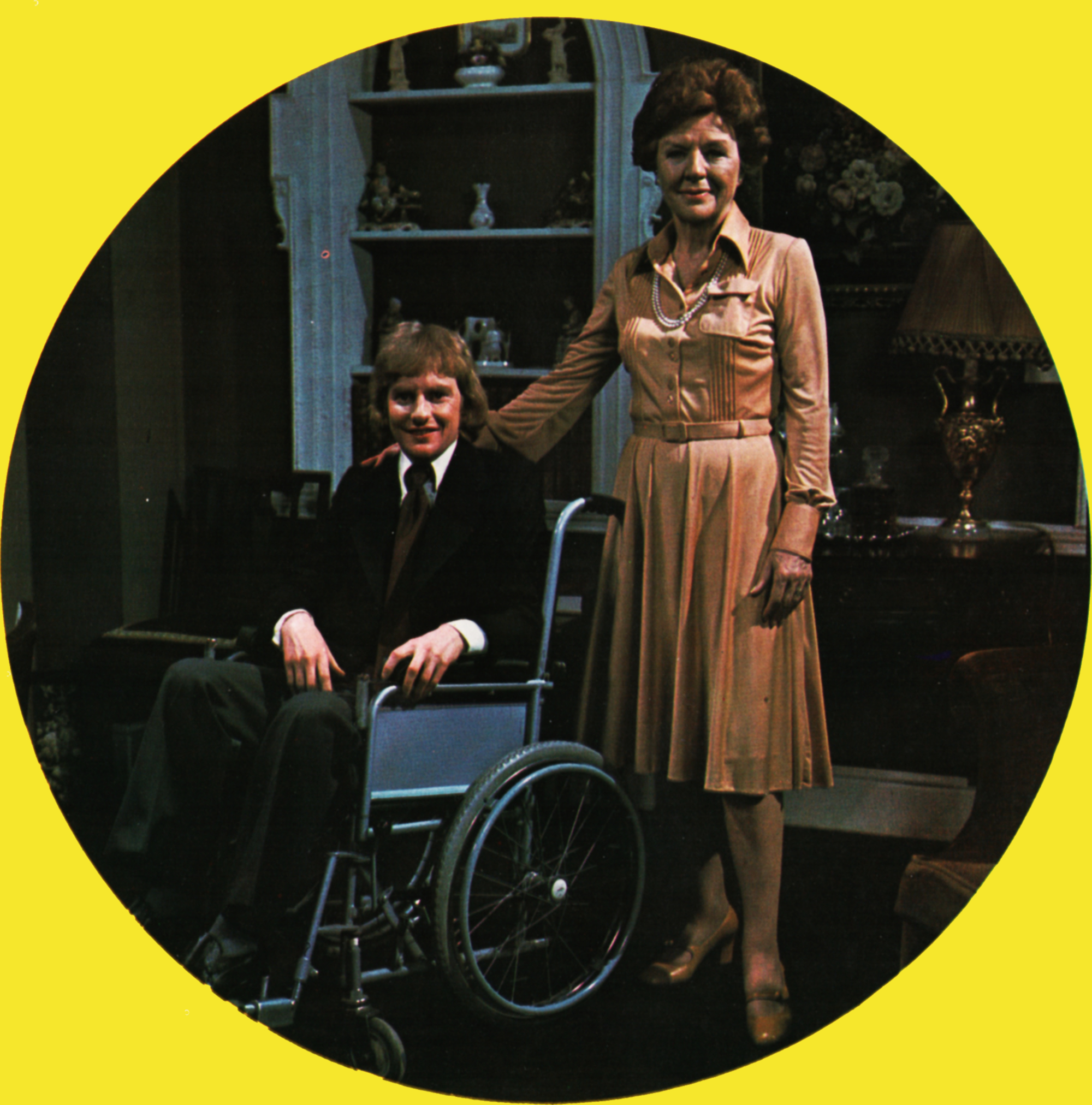
written by
Brenda Apsley,
Alison Edwards,
Glynis Langley,
Pippa Little,
and Hilda Young
are you a real CROSSROADS fan?
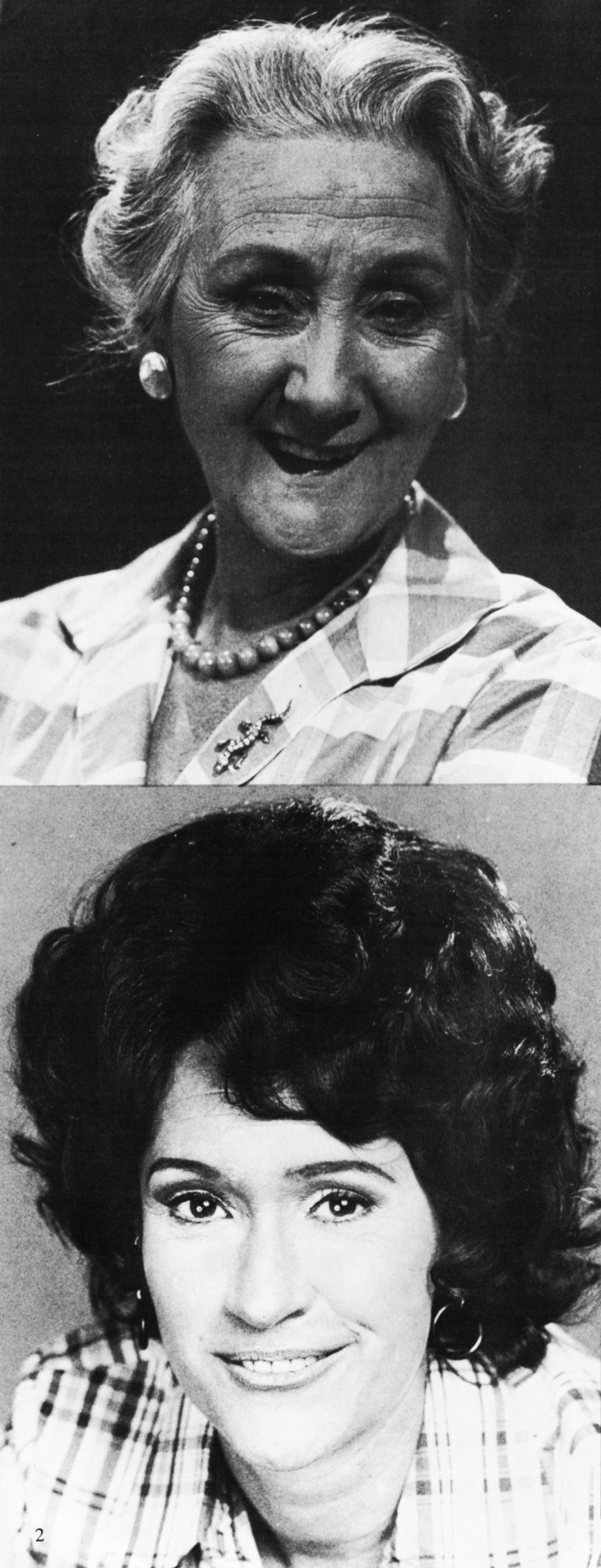
If you are you will be able to answer all these quiz questions involving people whom Meg has helped or whose lives have been involved with the motel, either now or way back in the past. Try the questions and see just how good your Crossroads memory is!
The CROSSROADS success story
Producer Jack Barton heads a team of directors, editors, writers, secretarial staff and a cast who he regards as ‘his family’.
That same ‘family’ are always the first to acknowledge that the great success the programme has enjoyed would not have been acheieved without the dedicated and professional contribution of the technical and studio crews.
The first episode of Crossroads was transmitted on 2nd November 1964.
On 19th September 1978 the programme will reach its 3,000th episode – an all-time record in British television.
Each week four episodes are seen by over 14,000,000 viewers, and the programme consistently heads the ratings in the nation ‘Top Ten’ programme charts, and many of its stars have now become household names.
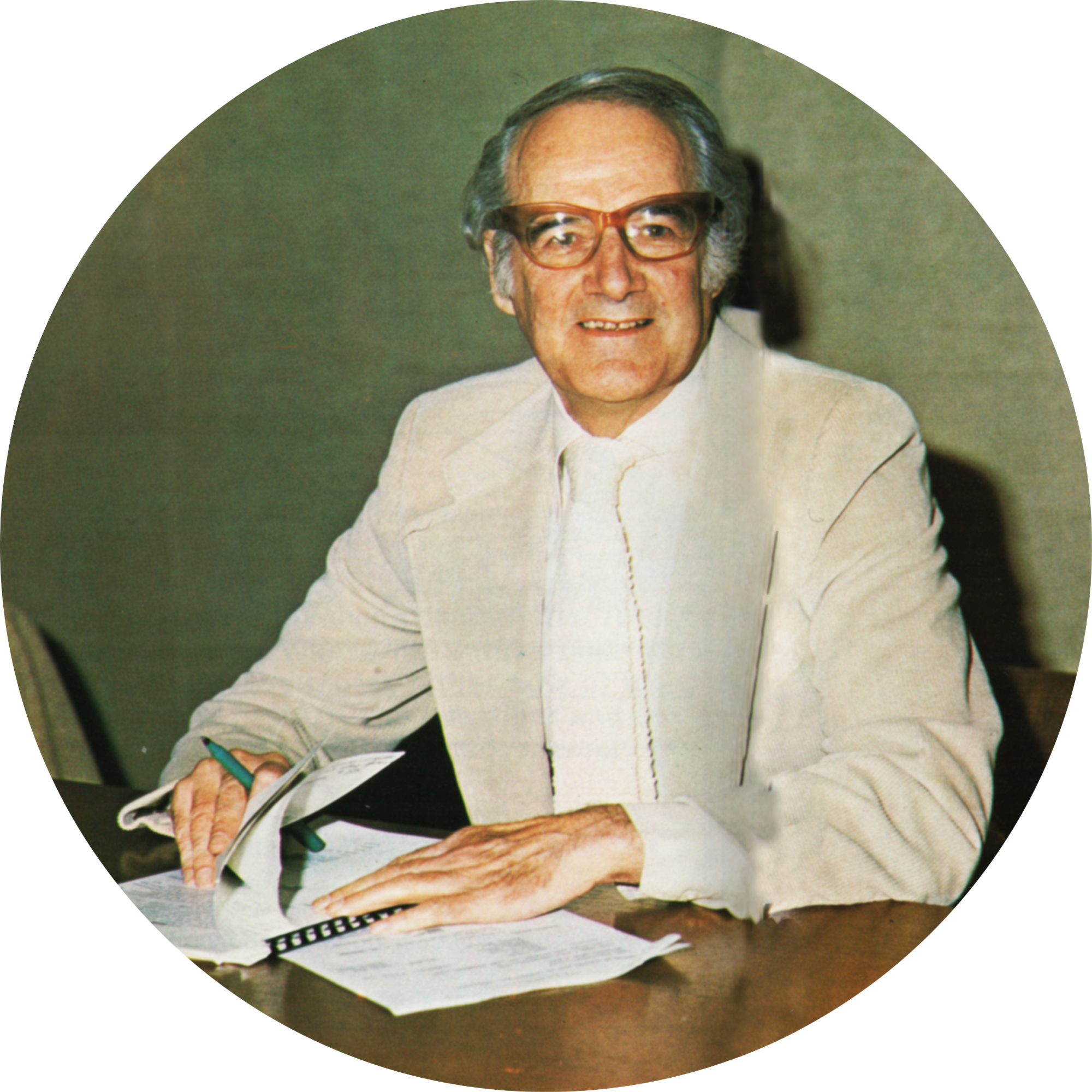
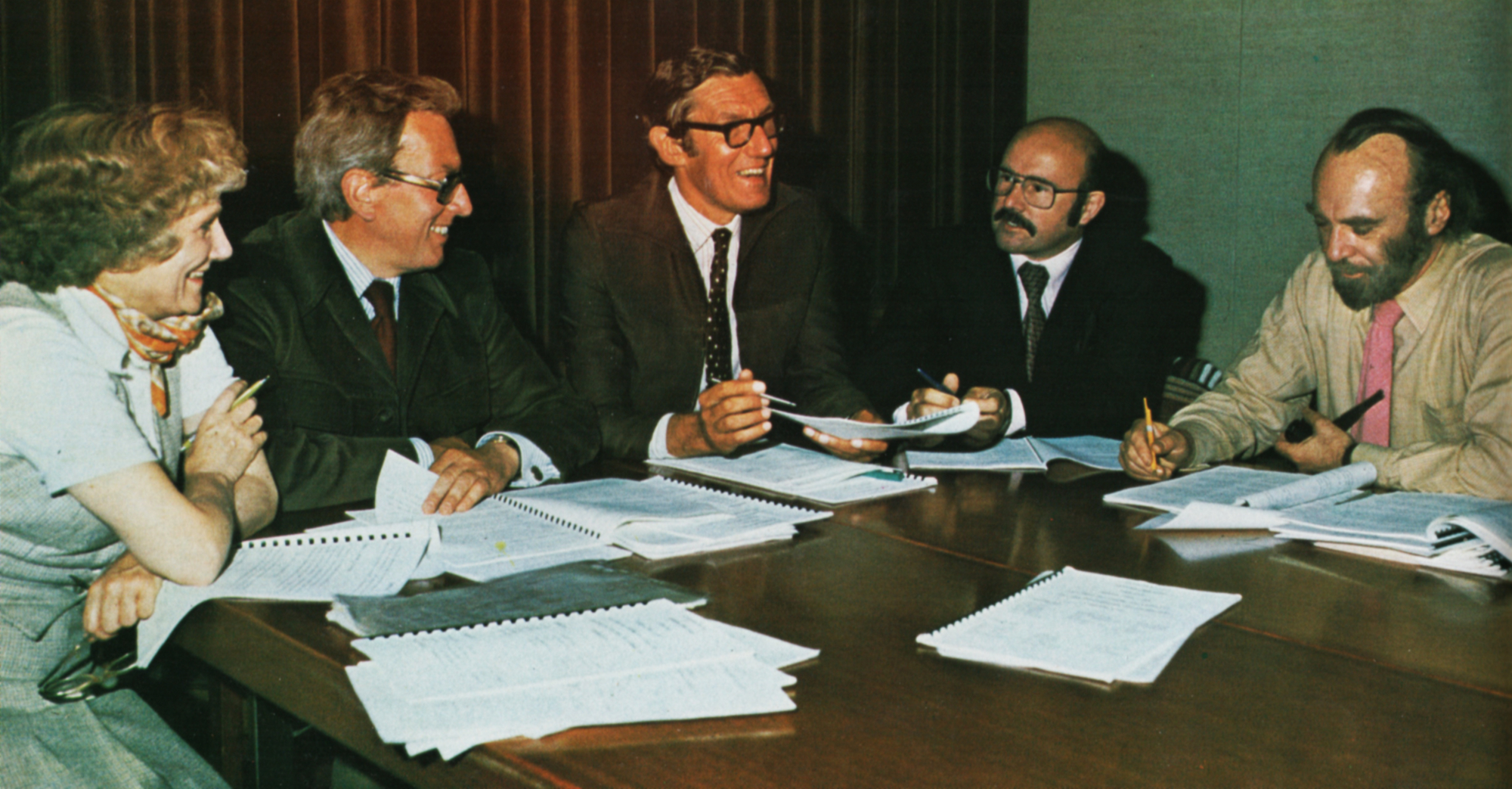
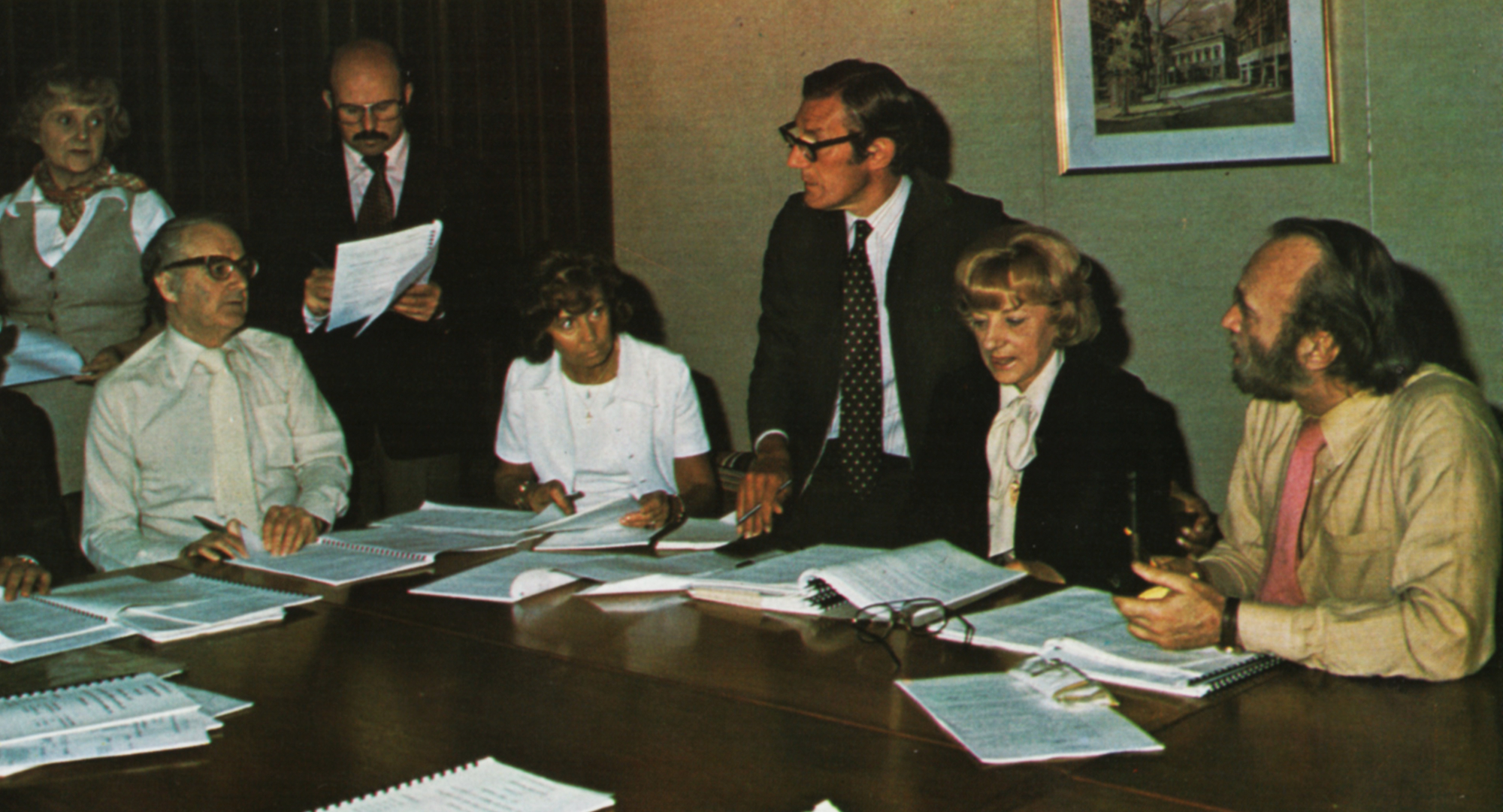
Crossroads has won the SUN AWARD for the best TV series for three consecutive years – 1973/4/5.
Producer Jack Barton won ATV Network’s LEONARD BRETT AWARD for the most outstanding contribution to the company’s output in 1977.
Noele Gordon, already known to millions as hostess of Lunch Box has achieved international fame as Meg Richardson, later to become Mrs Hugh Mortimer. She has won the TV TIMES AWARD for the favourite TV personality on no fewer than eight occasions, and has also won the TV TIMES AWARD for the most compulsive character, She was the first award winner in TV TIMES’ HALL OF FAME and has won the SUN AWARD for the top TV personality.
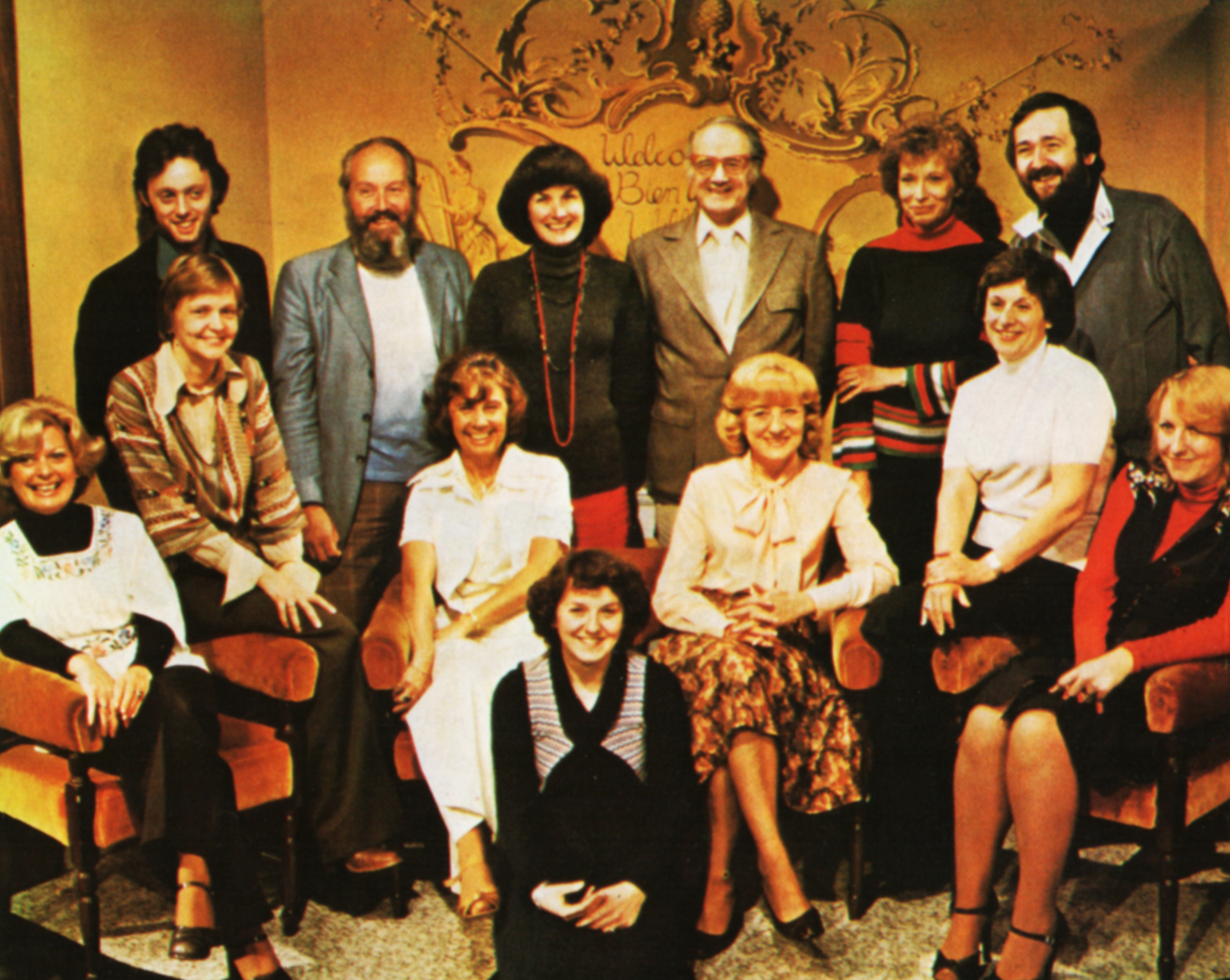
The Crossroads Production Team
Back row, standing, left to right: Jim Allen (stage manager), Michael Hart (director), Verity Lyall (production assistant), Jack Barton (producer), Valerie Nieberle (production assistant) and David Dunn (director).
Seated, left to right: Kathryn Pittock (secretary), Carol Glover (production assistant), Barbara Plant (secretary), Margaret French (production manager), Elizabeth Stern (stage manager) and Anne Hipkins (script typist).
Kneeling, front: Kay Dovey (script typist).
WELCOME TO CROSSROADS
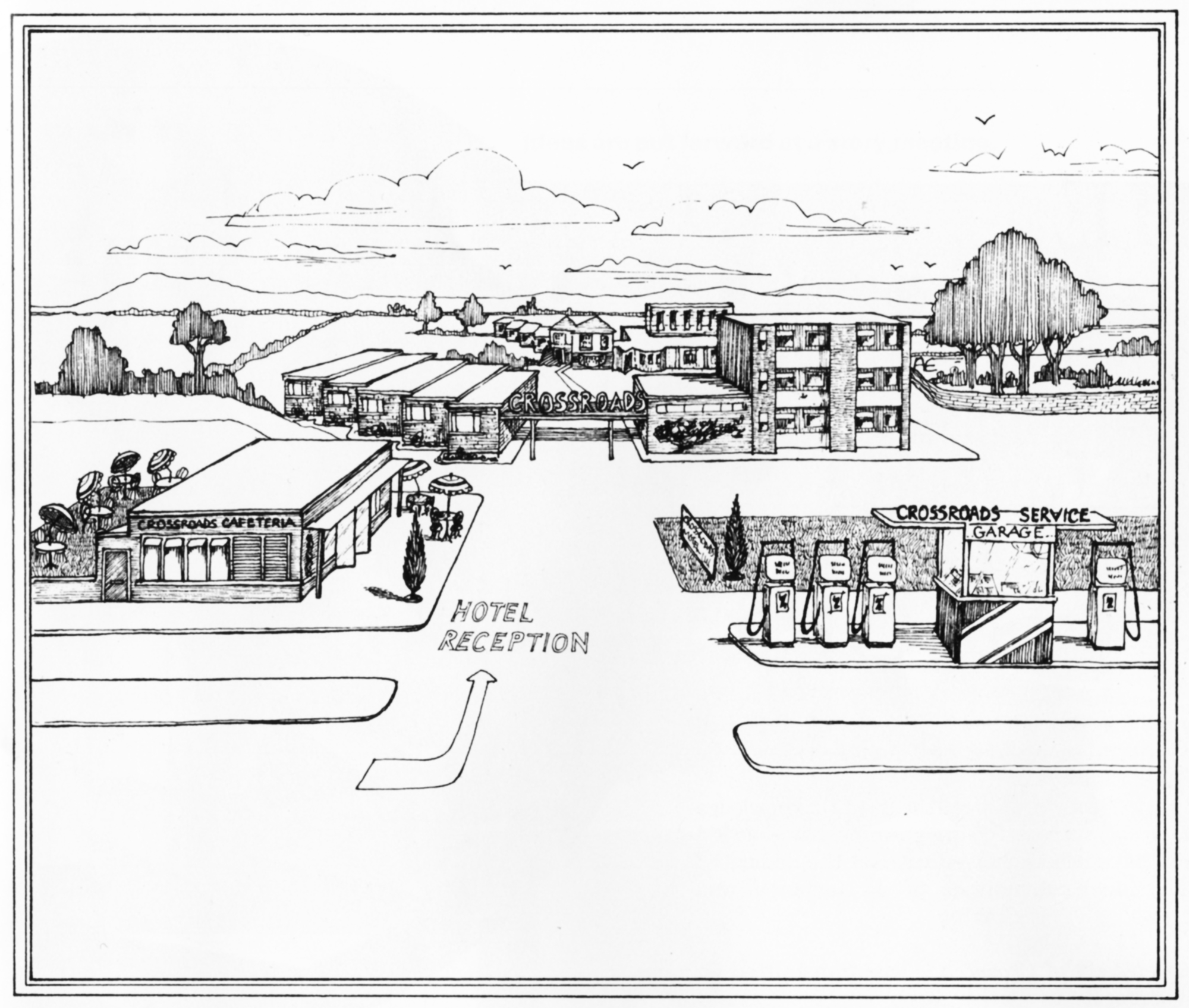
When Meg Richardson first opened her motel back in April 1963 she must have wondered if her gamble would pay off. Now, fifteen years and hundreds of guests later we know it has. True, there have been times when things looked very black, but Meg has soldiered on, never letting her personal problems interfere with the running of the motel, and trying not to let the problems of the motel come between her and her family.
Let’s take a look at the motel that has come to mean so much to so many people, both on and off the screen.

CROSSROADS EXTRA SPECIAL GUEST STARS
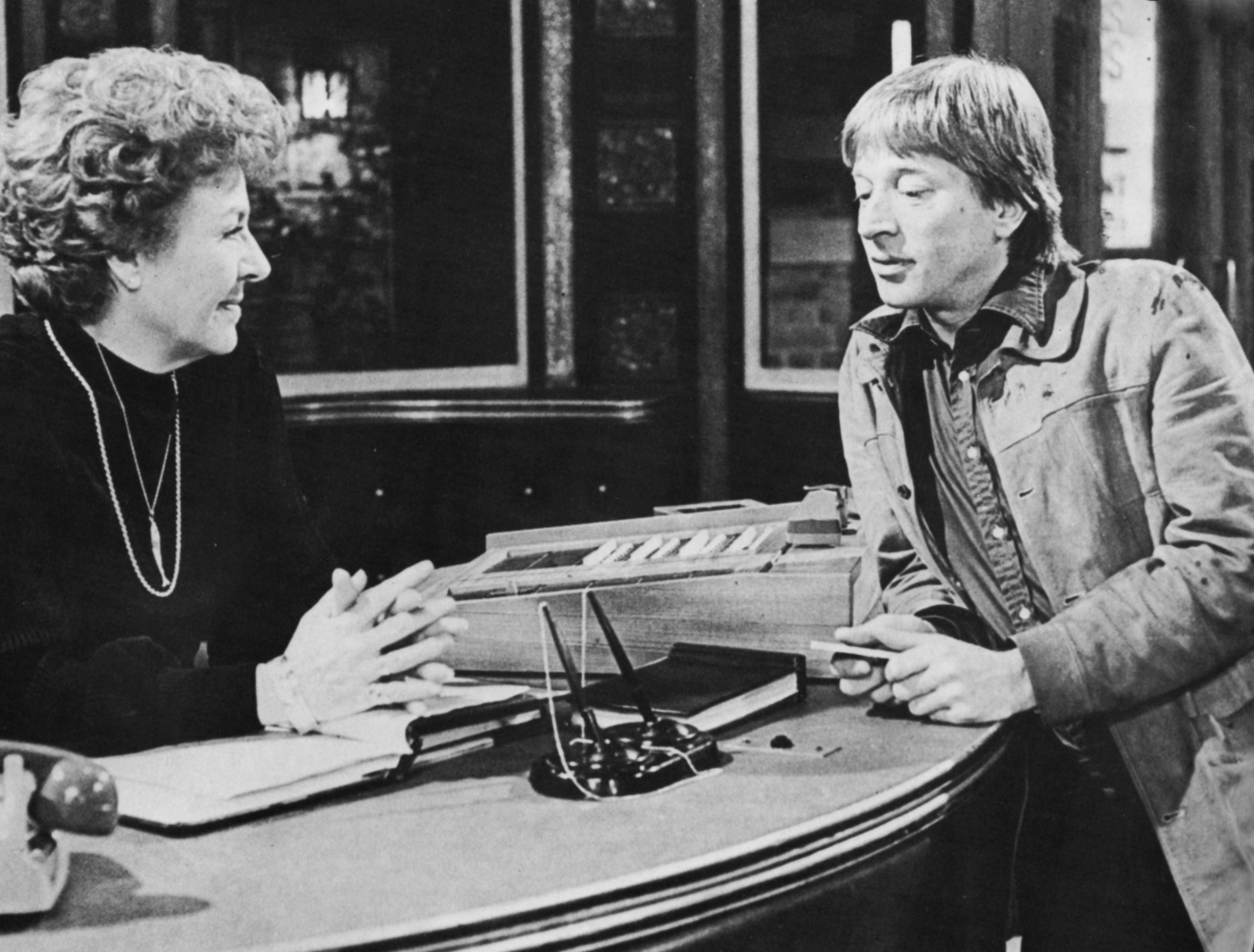
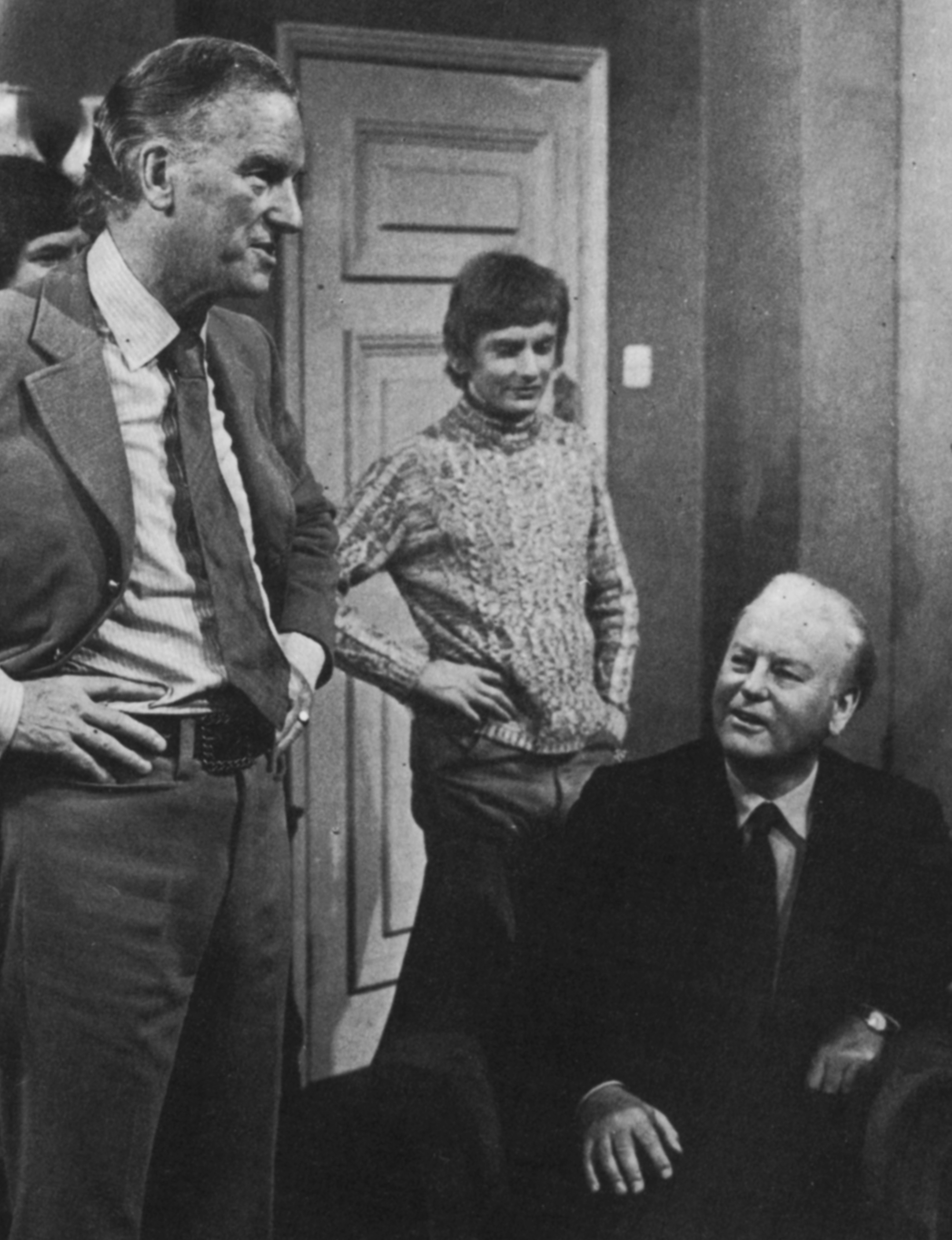
Of the many hundreds of actors and actresses who have appeared in Crossroads over the years, many have already been established stars; others have gone on to stardom thanks to their start on the programme.
Jon Finch, now an established film star, was a raw, inexperienced actor when he made his TV debut in episode 947. He played a weird and rather offbeat character called Gareth Leyton, and played the role with great assurance. When he left Crossroads, Jon went on to find international stardom.
Another young actor now in the superstar bracket who started out in Crossroads is Malcolm McDowell. He made his very first TV appearance on the programme in episode 643, way back when he was just twenty years old. Can you remember the part he played? Crispin Ryder, a PR consultant. After Crossroads, Malcolm went on to appear in TV series like Z Cars and Dixon of Dock Green, then into films like A Clockwork Orange, If and Oh, Lucky Man.
Another young actor who appeared opposite Noele Gordon in the series, this time one with a famous father, was Andrew Ray, son of Ted.
Actors aren’t the only people who have appeared on Crossroads. When someone was needed to play Monsieur Fabrice, who was demonstrating hair styles at Vera Downend’s salon, the choice was an obvious one. Teazy Weazy Raymond had become a star of TV in the fifties, creating hair styles in a variety series called Quite Contrary. Who better to play Monsieur Fabrice? Incidentally, Teazy Weazy’s wife, Rosalie Ashley, also appeared in the series for a while. She played Jane Mortimer, who died during a brain operation.
When a sequence of magic was needed in one episode, Clifford Davis, New Faces panellist and TV critic was called in. Clifford is also a professional magician, and was asked if he could suggest a way of levitating Diane, played by Sue Hanson. To create the stage illusion on TV would prove very difficult, so Clifford and the production team decided to use trick camera work instead. After Clifford’s spot at the magic convention that was being held at the motel, actor Alan Haines took over and, thanks to trick camera shots and angles, seemed to make Sue float in the air. Millions of viewers were fooled, and the producer decided to end the show with a bang – with a shot of Amy Turtle floating in mid-air!
The popular comic Don McLean started out as an actor, and appeared on Crossroads, playing a member of Benny Wilmot’s group, Georgie Saint and the Dragons. From that he went on to find fame as a comic – remember him on Crackerjack?
Another comic who landed a dramatic role in Crossroads was Stan Stennett. He had to play a gunman on the run who held a couple hostage, and made such a success of the part that he went on to be offered many more serious acting roles.
Do you remember when Ken Dodd made his TV debut as a straight actor? Yes, it was on Crossroads, too. He played the part of a hotel guest, and started off playing the scene straight, but then his famous sense of fun got the better of him, and soon it was jokes all the way. The technicians were laughing so much that they could hardly carry on__
Another face you might remember is that of Diane Keen. She appeared in Crossroads for a long time, playing the part of cheeky Cockney waitress Sandra Gould. In the series she was supposed to have a crush on the motel manager, played by Paul Greenwood – and Diane and Paul ended up getting engaged during the series! Diane went on to appear in The Fall of Eagles, playing Empress Elizabeth of Austria, and in The Cuckoo Waltz, as Fliss.
Wendy Padbury, who appeared in Dr Who as one of the time traveller’s assistants, also started out on TV in Crossroads. She was only seventeen at the time, and played the part of a fourteen-year-old from a broken home, Stevie Harris, who was fostered by Meg.
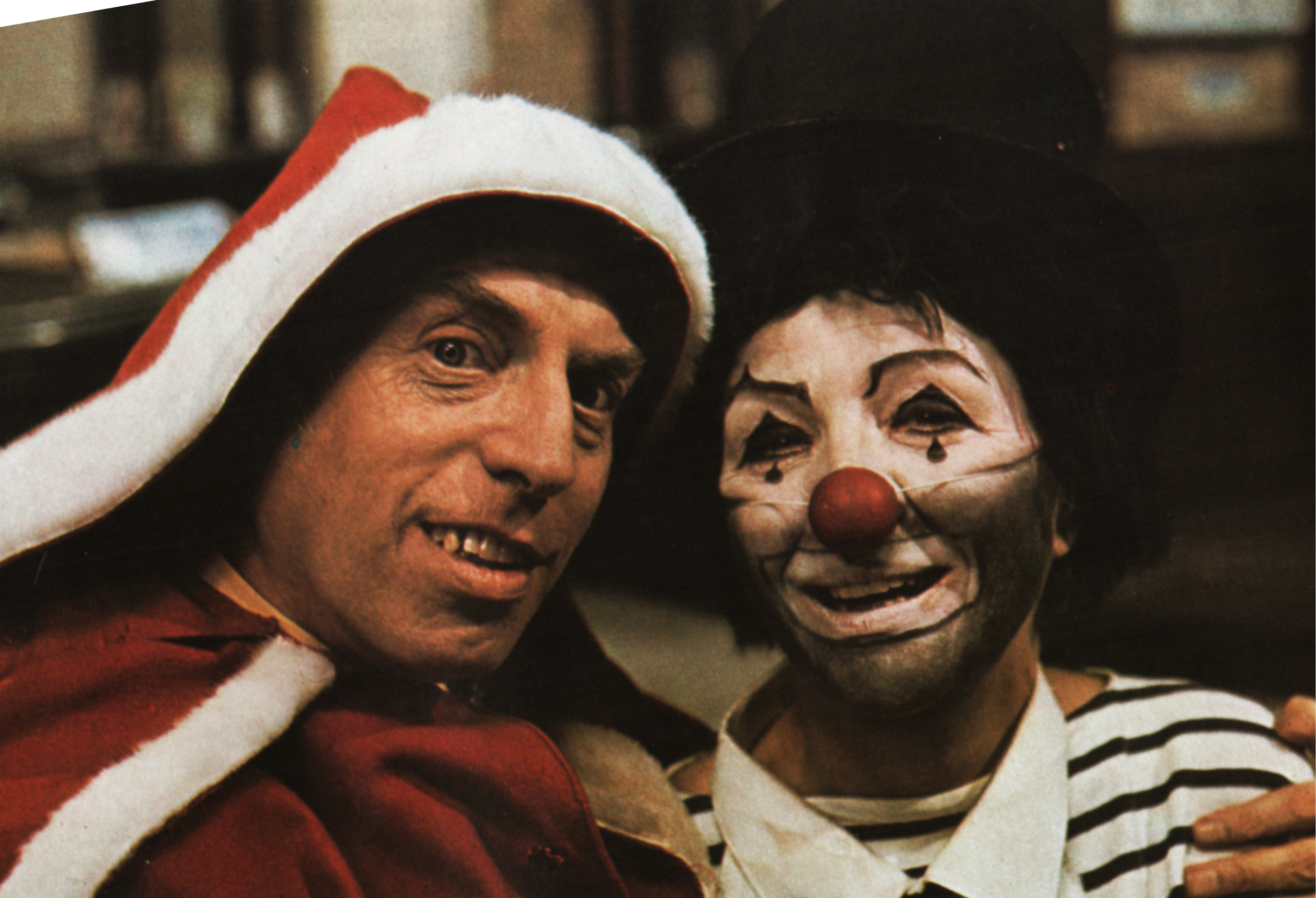
When Larry Grayson was appearing in cabaret in Solihull the producer and casting director and some members of the Crossroads cast went along to see him, and enjoyed his jokes about the programme. When they went backstage to congratulate him he told them that he was a real fan and asked, “Why don’t you get me a spot?” So it was that, soon after, Larry appeared as a motel guest. He was supposed to complain about his room, but ignored the script completely, making it all up as he went along. Noele enjoyed his ad libs as much as the viewers, and since then she and Larry have been firm friends.
Two Coronation Street stars have also made appearances on Crossroads. Bryan Mosley (Alf Roberts in the Street) has appeared several times, in various roles, and Stephen Hancock, who played Ernie Bishop for many years, appeared as two characters – Councillor Clewes and Warren Haycroft.
Orchestra leader Joe Loss, former England football captain Billy Wright, funny man Bob Monkhouse and TV personality Shaw Taylor – the list of stars who have appeared on Crossroads goes on and on.
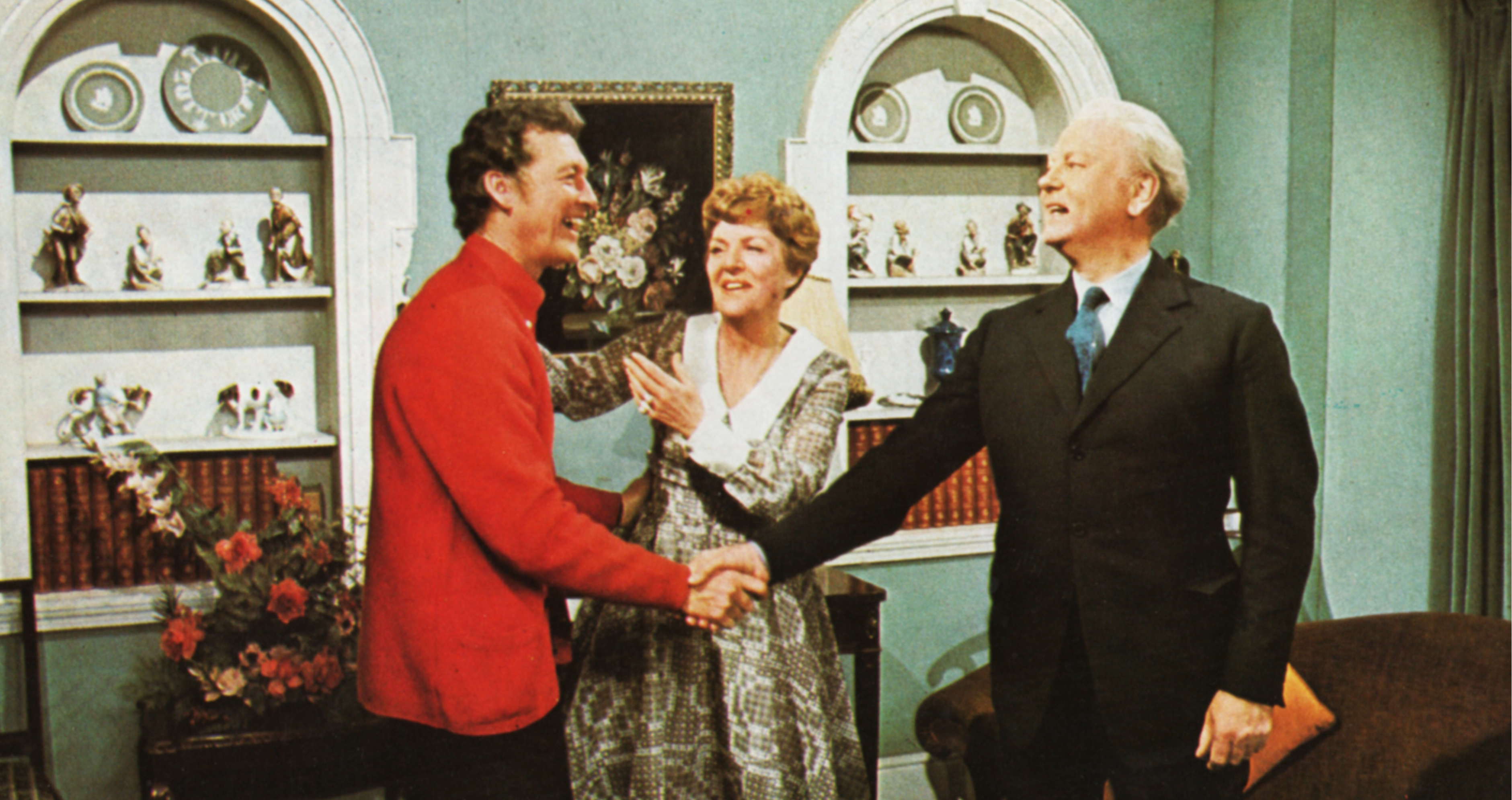
David Hunter

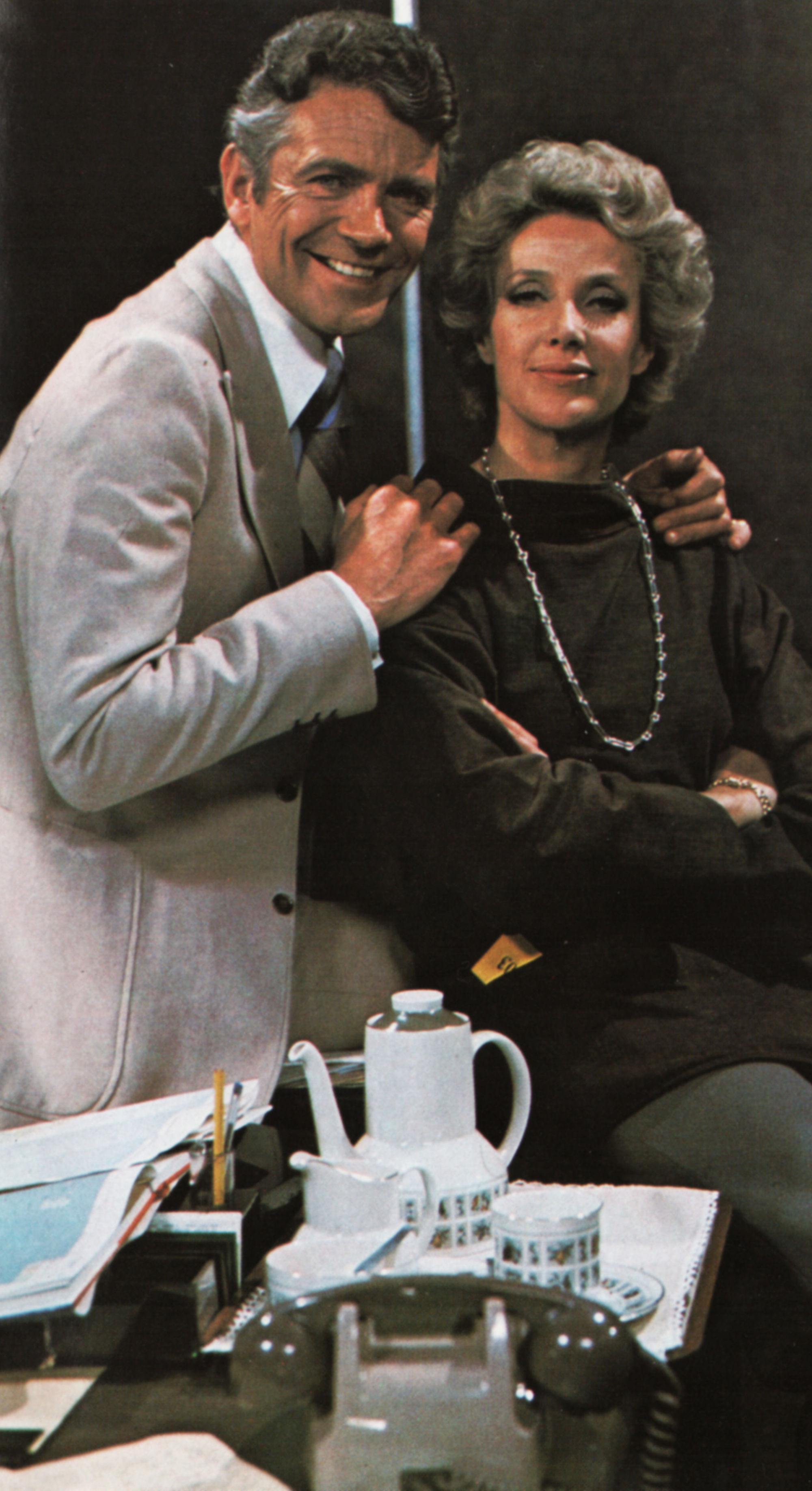
Handsome, suave David Hunter is more than just Meg’s colleague and fellow manager of the Crossroads Motel. He is a close friend too, and Meg knows that when she needs a sympathetic ear she can always turn to him.
Like Meg, David has had his fair share of trouble over the years. Originally he was married to a very demanding, neurotic woman who drank heavily and often tested his patience to the limit. In fact on one occasion David, normally a mild, gentle man, went over the edge during a particularly heated argument and resorted to violence.
And then there was Kelly, the lovable, restless journalist who captured his heart. Although she was often abroad for her job, Kelly returned to the motel whenever she could, and for a time the relationship worked well. Then she met Steve McKenna, another writer, and for a time thought that he was the man for her. By the time she realised her mistake, David had decided that they were too different and their romance came to an end. Meg knew that David would need time to get over Kelly completely, and she persuaded him to take a long holiday in Venice.
David’s feelings about Meg’s romance with Hugh were somewhat mixed. He liked Hugh, but he was worried that Hugh’s many business interests would keep him away too often, and that Meg would feel neglected. However, even he could see that the couple were very much in love, and after their marriage he lent them his cottage.
While David himself would never deliberately hurt Meg, his relatives have caused more than one tragedy in her life. David’s uncle Timothy was the cause of the accident that put Sandy in a wheelchair for the rest of his life, and his son Chris unwittingly became the linkman between the motel and the terrorists who kidnapped Hugh and caused his untimely death.
But all that is behind him now, and he can devote his time and energy to overseeing the running of the motel, a job that all agree he does very well.
Crossroads cuisine
The Crossroads restaurant enjoys a very good reputation for its cuisine. Here are a few special recipes for you to try out at home.
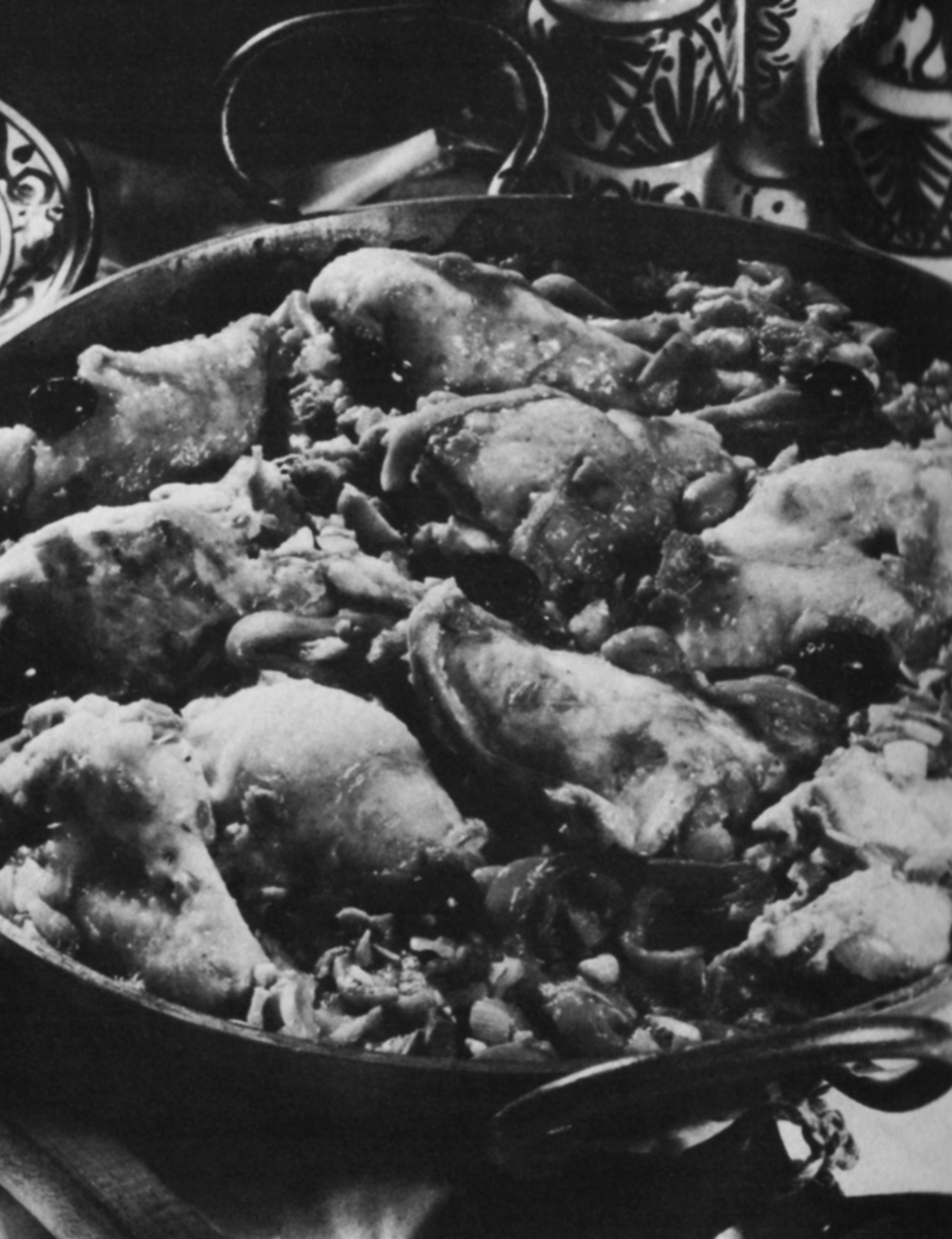
Carlos Rafael, the Spanish chef who used to work at the motel, introduced quite a few Spanish items to the menu. Although Carlos is no longer at the motel – you will remember how tragically he died in Spain – the dishes proved so popular with the guests that they still appear on the menu. Here is one of Carlos’s favourites:
POLLO CHILINDRON for 4
- 1 3-lb chicken
- 3 tablespoons olive oil
- 2 large onions
- 2 cloves garlic, crushed with a little salt
- 2 small green peppers
- 2 small red peppers
- 2oz smoked ham, finely chopped
- 14oz tin peeled tomatoes
- 8 stoned green olives, halved
- 8 stoned black olives, halved
- salt
- freshly ground black pepper
Joint the chicken into eight pieces and season each piece with salt and pepper. Heat the olive oil in a flameproof casserole and fry the chicken joints for about 5 minutes, till lightly browned. Remove the joints and place on one side.
Peel and chop the onions, crush the garlic and cut the peppers (after de-seeding) into ¼” wide strips. Fry the vegetables in the oil for about 5 minutes, until soft but not brown. Stir in the ham and tinned tomatoes and cook over a high heat to reduce the liquid to a fairly thick sauce. Return the chicken pieces, cover the casserole and simmer gently for about 30 minutes. Check the seasoning, stir in the olive halves, and serve with lots of saffron rice and a green salad.

When David Hunter returned from his trip to the Middle East with Angela Kelly he was firmly converted to the food he had tasted, enthusing for weeks about the meals he had eaten in Greece in particular. In the end, Meg decided to try one of his favourites on the menu, and was delighted to find that the guests enjoyed it as much as David. Here’s the recipe:
KOTOPOULO ME MELITZANES for 4
- 1 3-lb chicken, cleaned and trussed
- 2 tablespoons olive oil
- 8oz button or pickling onions
- 12oz aubergines
- 8oz courgettes
- 4oz okra (or a small tin)
- 8oz small fresh tomatoes
- salt and freshly ground black pepper
- sprig of fresh rosemary
- ¼ pint chicken stock
Preheat the oven to 190°C/Gas Mark 5. Heat the oil in a large frying pan and lightly brown the chicken. Place the chicken in an ovenproof dish.
Peel the onions but leave whole, and fry in the oil for about 5 minutes until lightly browned. Cut the aubergines into large cubes, top and tail the courgettes and cut into ½” slices and cut the stems from the fresh okra. Add all the vegetables to the frying pan and cook for about 2 minutes. Remove from the heat and add the whole tomatoes, salt and pepper. (If you are using tinned okra, drain it and add at this stage).
Place the vegetables around the chicken, pour over the chicken stock and add the sprig of rosemary. Cover the dish and bake for about 1½ hours or until tender. Serve with boiled rice and a tossed green salad.
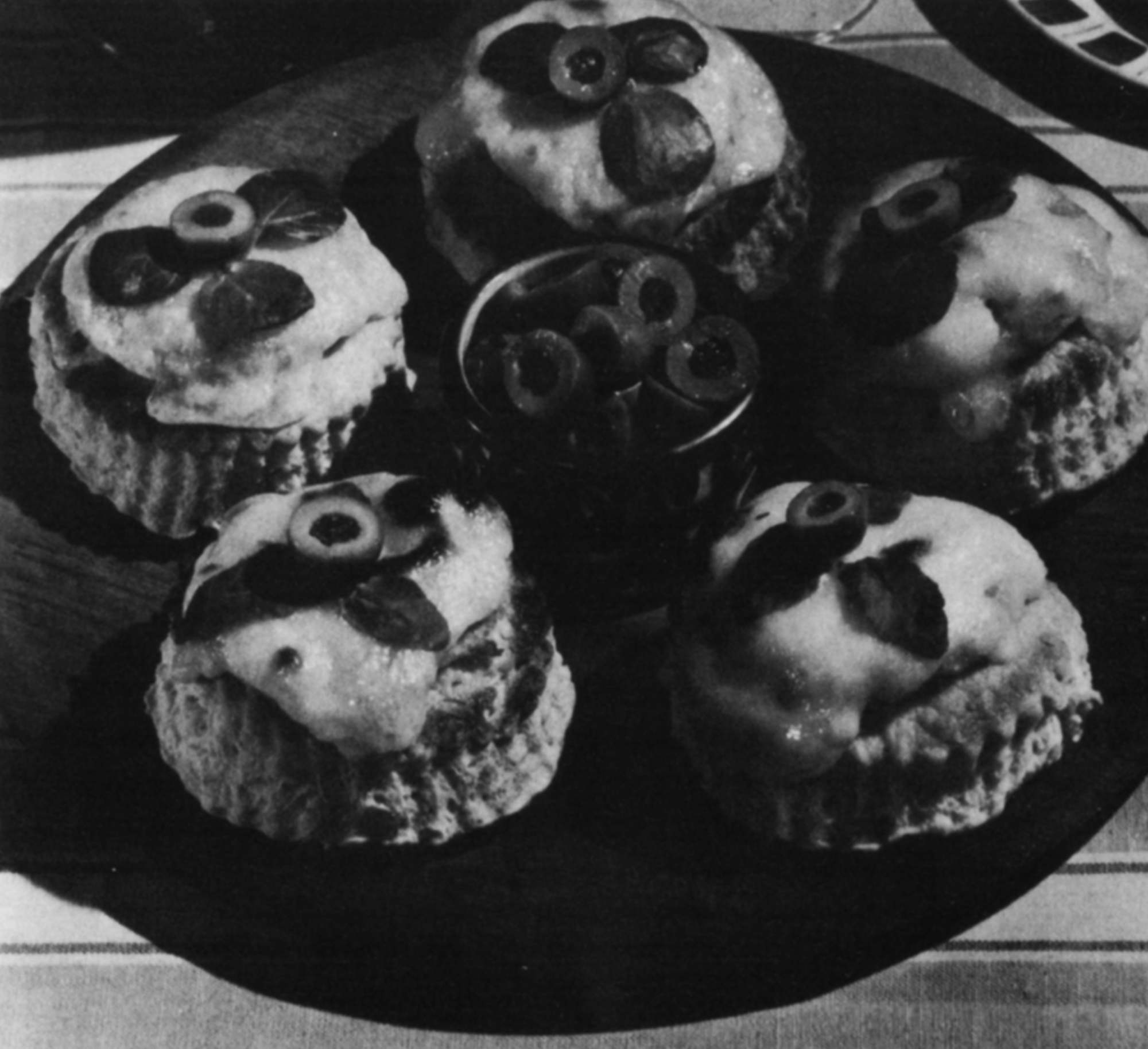
As you probably know, Meg loves having people to eat, whether it be a large dinner party or just snacks with drinks. As a tasty alternative snack to the ubiquitous vol au vents, Meg makes these special hot Italian Scones. She has often been asked for the recipe – here it is!
ITALIAN SCONES
- 1lb plain flour
- 1oz baking powder
- 1 teaspoon salt
- 4oz butter
- 1 red Oxo cube
- 1oz grated strong cheese
- milk to mix
- For the topping:
- ½lb pork sausage meat
- 4oz Lancashire cheese
- tomatoes and olives to garnish
- watercress to garnish
Sieve the flour, baking powder and salt into a bowl, crumble in the Oxo cube and rub in the butter. Add the grated cheese and mix to a soft dough with the milk. Roll out the dough to a thickness of ¼”, cut into circles about 4″ across and place on a greased baking tray. Roll out the sausage meat and cut out a 4″ circle for each scone. Bake the pastry circles at Gas Mark 7/450°F for 5 minutes, top with the sausage meat circles and bake for a further 10 minutes. Remove from the oven, sprinkle with Lancashire cheese and grill until brown and bubbling. Garnish with tomato slices, olives and watercress.

For a slightly more formal buffet party, Meg likes to serve this special cottage cheese and noodle ring as an impressive centrepiece, filled with shrimps in piquant sauce. Chilled, it makes a perfect summer dish, as her guests will testify.
COTTAGE CHEESE AND NOODLE KUGEL for 4
- 4oz short-cut noodles
- 8oz cottage cheese with chives
- 2 dessertspoons Parmesan cheese, very finely grated
- 2oz butter
- 1 carton soured cream
- 2 eggs
- salt and freshly ground black pepper
Cook the noodles for about 10 minutes in 2 pints of well-salted boiling water until just tender. Drain, melt the butter in the noodle pan and return the noodles. Blend together the soured cream, cottage cheese and Parmesan cheese and mix in the buttered noodles. Season well and bind together with the beaten eggs.
Oil a 1-pint ring mould, pack in the noodle mixture, cover with greaseproof paper and bake at Gas Mark 5/375°F for 45 minutes or until set. Unmould and fill (with shrimps in sauce, chicken, tuna etc.), garnish and serve with a green salad. Eat hot or cold.
Recipes courtesy of The British Poultry Information Service, The Oxo Meat Cookery Service and The Pasta Information Centre.
Introducing Meg’s Motel
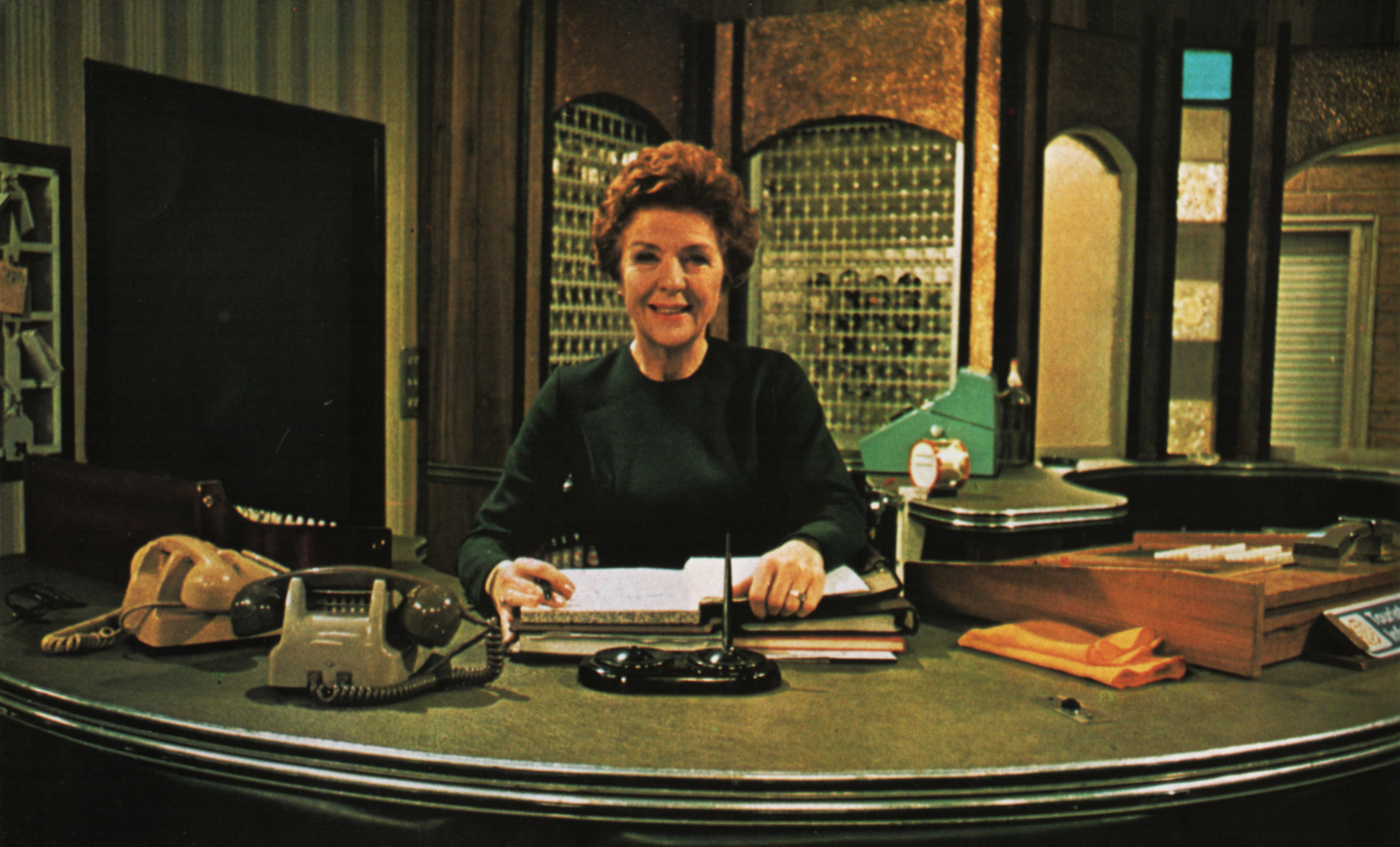
To its thousands of admiring fans there does not seem a time when Crossroads did not exist, it has been part of their lives for so long. But in fact the first episode of Crossroads took place in November 1964, several years after the idea of a daily serial had been put to Sir Lew Grade.
Lancashire already had its Coronation Street and viewers could see life in a hospital in Emergency Ward 10. Now it was felt that the time had come to give the Midlands their own show, set in the Midlands area itself. But what was the Midlands? It covered Swindon and Stoke and the famous Black Country, but it also extended south to Oxford, covered the borders of Anglia as well as parts of Yorkshire and Lancashire.
Therefore a broader storyline than just the Midlands was needed to appeal to a wider viewing audience. Hazel Adair and Peter Ling had suggested a serial called The Midland Road, centred on a widow named Meg Richardson and her two children who had turned their family home into a motel.
Although the storyline appealed everyone, the title for the serial received a lukewarm reception, and so it was decided to run a competition in a Midlands newspaper asking for alternative suggestions. But none of the titles won official approval, and the prize offered in the competition was given to charity. Reg Watson then put forward several title suggestions himself and Crossroads was finally chosen as the most popular.
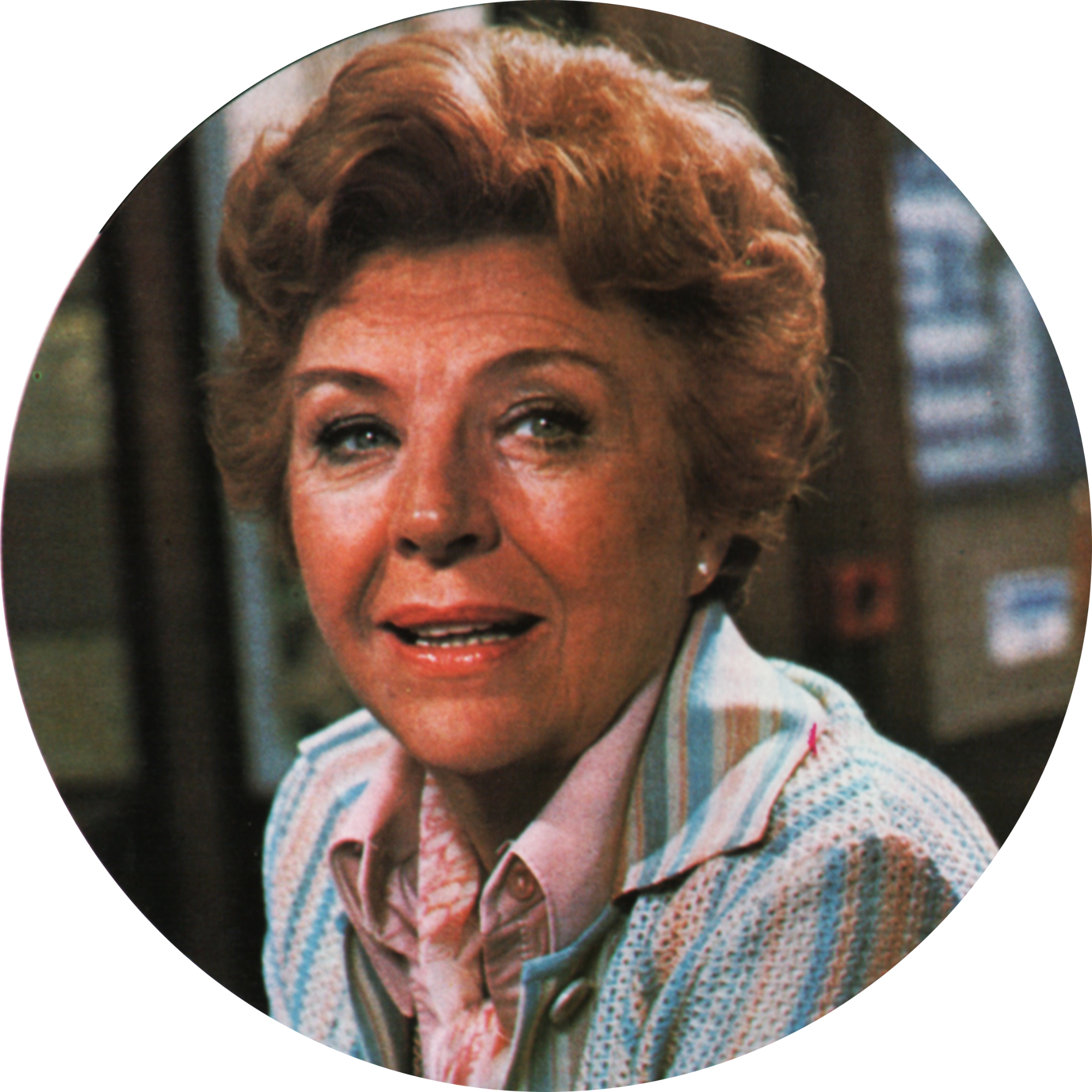
Everyone was sworn to secrecy until ‘the show got on the road’ and the leading roles were cast. Noele Gordon, who had been hostessing Lunch Box, was the ideal choice for Meg; she was already overwhelmingly popular in the Midlands and any show including Noele was sure of an excellent reception.
Although Noele now had a different role to play, Meg Richardson soon became her alter ego, and she became the centre and heart around whom the rest of the cast revolved . . . indeed, in time they actually began to call her affectionately ‘The Godmother’.
But Meg needed a family, and Crossroads needed a staff, and so the hunt was on for a cast which would work happily together.
Some of the behind-the-scenes searches had a true life plot that would have seemed ‘far-fetched’ in a fictional story. Jane Rossington, who came for an audition as Meg’s daughter, arrived somewhat distrait because her train was late, but still managed to talk her way into the coveted part.
Filling the part of Sandy, Meg’s son, was much more difficult. Teenagers up and down the country were interviewed but somehow that vital something was missing. Time was running out when one day a young boy walked into a script conference saying that a cleaner had sent him up the stairs to audition for the part of Sandy! He had just happened to be passing by in his lunch break although he was at drama school. He read the part of Sandy in a voice which can only be described as ‘uniquely croaky’ and that’s how Roger Tonge, a Birmingham student, became Meg’s son.
Gradually all the parts needed for the first episodes were filled, and among the cast when Meg officially opened Crossroads motel were her sister and brother-in-law, Kitty and Dick Jarvis, played by Beryl Johnstone and Brian Kent, the Rev Guy Atkins, played by veteran actor Arthur Ridley, Peggy Aitchison as Mrs Blundell the housekeeper, and Raymond Mason as George Petersham. Later episodes featured Sue Nicholls as Marilyn Gates, the blonde waitress at Crossroads, who later married the new vicar, Peter Hope, played by Neville Hughes.
Crossroads was filling with staff and customers, whose lives were to become of interest to thousands of viewers as the episodes went on . . . Meg’s motel had opened, and its fans hope that it will never close!

Come for cocktails
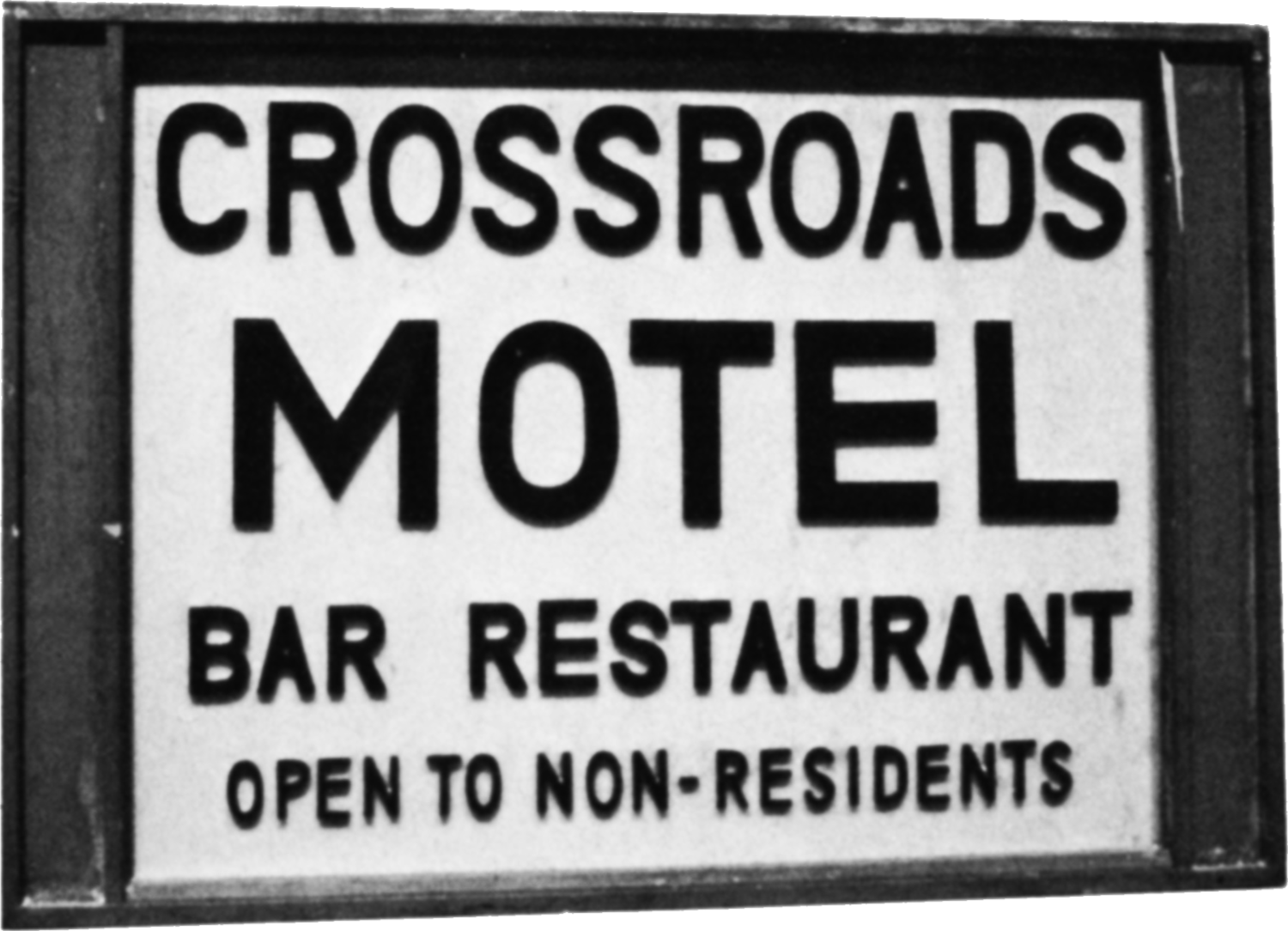
GOLDEN RULES
- Choose a glass which is large enough to allow you to serve a generous drink without filling it to the brim.
- A glass which is highly polished and sparkling will add extra appeal to your cocktail.
- Mix the drink in a large glass or cocktail shaker. Clear mixtures should be stirred, cloudy ones should be shaken.
- Stirring means mixing a drink with a long thin spoon by whirling it round until the ingredients are cold.
- Shaking means mixing the ingredients and ice in the shaker and shaking it vigorously.
- The majority of cocktail shakers are fitted with a strainer. This is to hold back the ice while pouring. If you are using a mixing glass you will have to find a suitable kitchen strainer. Ice is nearly always essential for a good cocktail.
Over the years at the Crossroads Motel barmen have come and gone, and their popularity with the more discerning guests has depended to some extent on their ability to mix a good cocktail.
Currently coming into vogue again, after a slight lessening of interest over recent years, the cocktail is practically an institution in itself. It carries with it all its own traditions, such as the cocktail hour, the cocktail party, and that cute little number, the cocktail dress.
But what exactly is a cocktail? Well, quite simply it is a blend of drinks. Gin and tonic is a cocktail, and so is vodka and orange. For the enthusiasts, however, there are far more exotic and exciting concoctions to try, and once you have mastered the basics of the art there is nothing to stop you devising an original cocktail of your own.
The cocktail is thought to have come by its name as a reference to the colourful tail feathers of the farmyard rooster, and it was ‘invented’ in America, as far back as the beginning of the nineteenth century.
We’ve chosen a few of the favourite recipes of Crossroads’ barmen to share with you, together with their hints for serving these elegant and delightful drinks.
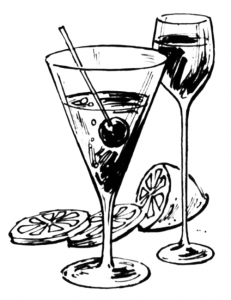
Mix Yourself a Dream
SCREWDRIVER
Half fill a cocktail shaker with cracked ice and pour over 1 part each orange juice and Wyborowa or other good quality vodka. Shake vigorously and strain into chilled cocktail glasses.
GINGER BEER COOLER
Take two measures of Dubonnet, add a dash of Rose’s Lime Juice and top up with ginger beer. To this refresher add plenty of ice and garnish with lemon or lime.
DRY MARTINI
⅔ Gordon’s Dry Gin
⅓ Dry Vermouth
Half fill a mixing glass with broken ice, add the gin and Dry Vermouth, stir well and serve with a twist of lemon peel.
LOVER’S NOCTURNE
Pour ⅔ Wyborowa vodka, ⅓ Drambuie and a dash – just a few spots – of Angostura into a cocktail shaker with plenty of cracked ice. Stir and strain into cocktail glasses. Serve with Chopin and moonlight.
CHERRY MINT
1 measure Freezomint
2 measures Cusenier Cherry Brandy
3 measures lemonade
ice cubes
Use a small or medium glass. Stir the ingredients well, and add a cherry on a stick.
RUSTY NAIL
½ Drambuie
½ Scotch Whisky
Pour the above ingredients into tumbler filled with ice.
CONNOISSEURS' CORNER
MOSCOW MULE
Pour 1 jigger Wyborowa vodka and the juice of ½ a fresh lime over ice cubes in a copper mug, silver goblet, or highball glass. Fill the container with ginger beer. Stir the drink gently and garnish with a slice of lime. Cheers!
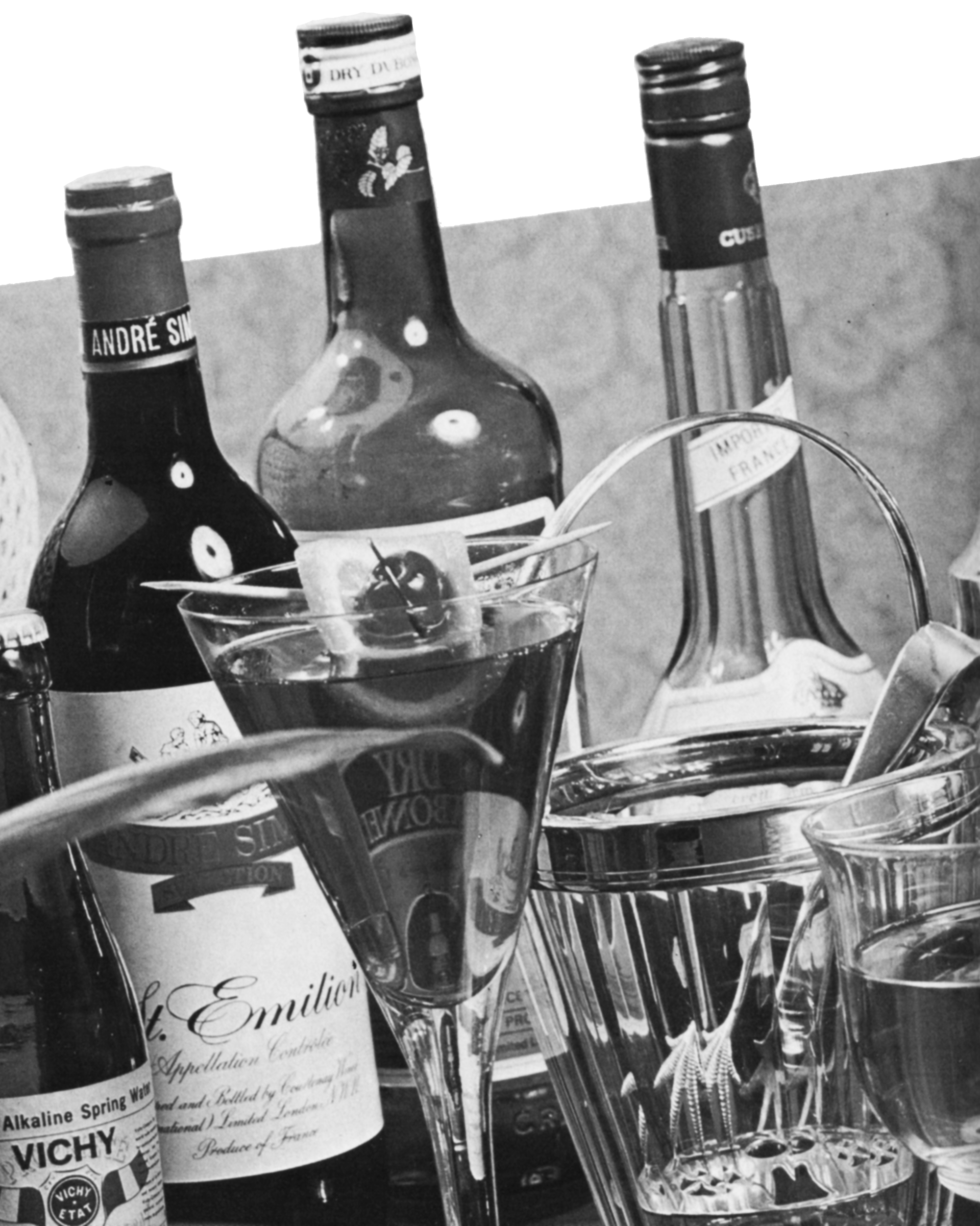
THE HARVEY WALLBANGER
The cocktail craze which is currently sweeping America centres around the Harvey Wallbanger, a delightful concoction using Galliano, an Italian liqueur which some have likened to liquid gold.
It seems that the Harvey who gave his name to the drink was the drop-out son of an American socialite family. Harvey’s passion was surfing, and he would celebrate a successful day in Long Beach, California, with a glass of vodka and orange juice, topped with Galliano.
Harvey’s friends sampled the drink, and before long its fame had spread far and wide. So much so, in fact, that a Harvey Wallbanger character can now be seen decorating T-shirts and posters all over America.
Want to know what all the fuss is about? Well, Meg Mortimer has many friends in America, and she has offered to share with us the exclusive recipe, cabled over to her by a fellow motel owner, who figured the drink would go down as well in Birmingham as in Pasadena!
1 measure vodka
4 measures orange juice
½ measure Galliano
Fill a tall glass with ice, pour in the vodka and the orange juice – then gently float the Galliano on top. Sit back, relax and enjoy.
The Noele Gordon Story
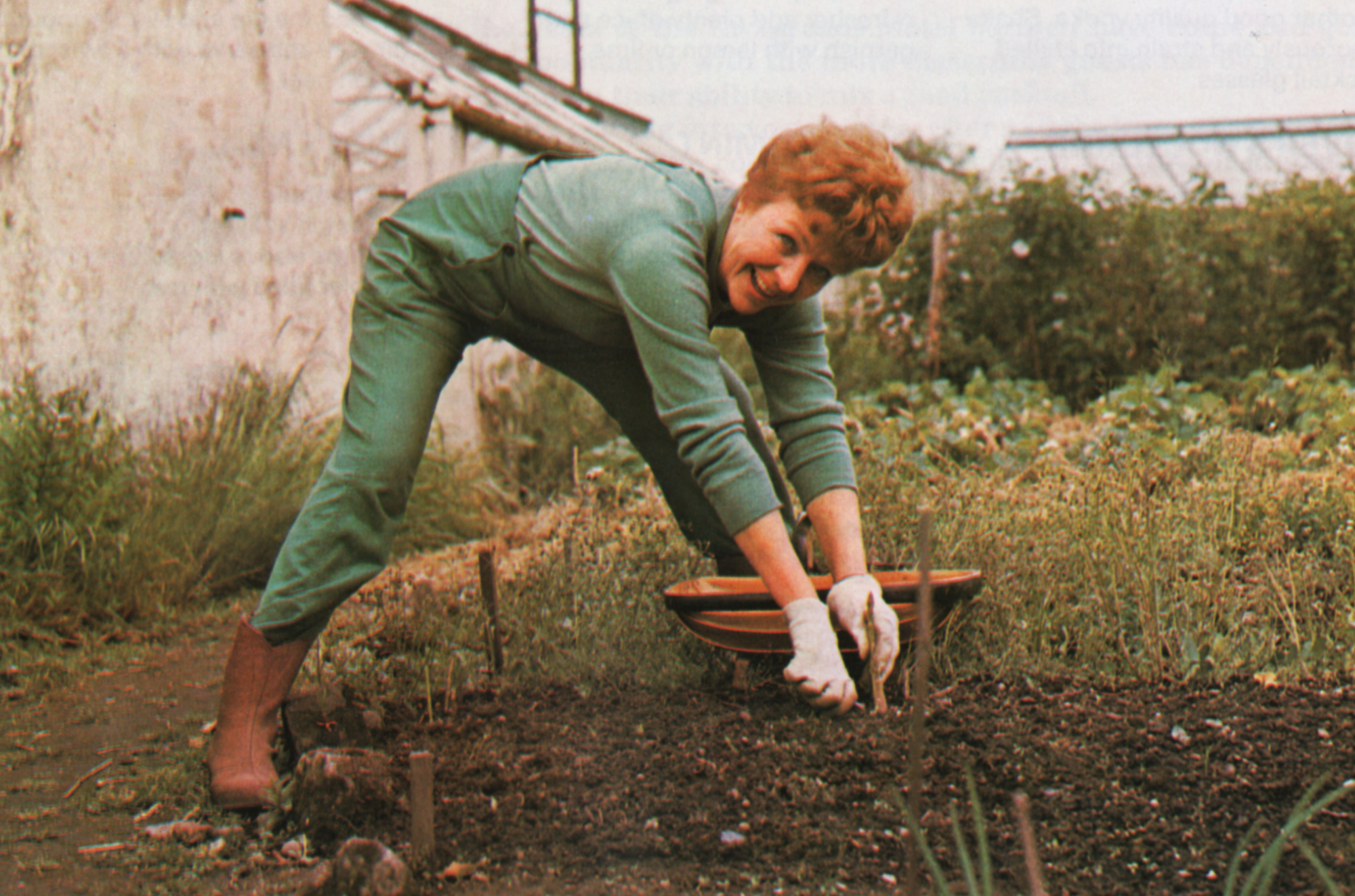
Noele Gordon lives something of a dual existence. To millions of TV fans she is Meg Mortimer, owner of the Crossroads Motel; many almost refuse to believe that she is simply an actress playing a part, with a very different private life of her own away from the TV studios. To them Meg is a real person.
The role of Meg has brought Noele many accolades and awards from countries all over the world – in fact, she has made more TV appearances than any other actress.
Noele’s transition to top TV personality really began in 1959, when she was hosting what was the Midlands’ first TV chat show, Lunch Box. Outside-broadcast shows had been tried, and the huge fan following that Noele had really impressed Sir Lew Grade, who wanted to do more. The original producer Reg Watson said that technical problems would make that a difficult project, but he took the opportunity to talk to Sir Lew about another idea he was keen on. He wanted to produce a serial – a daily serial – something that had never been tried before on British television.
Sir Lew didn’t say much about Reg’s idea at the time, but five years later Noele was shocked to hear that the still-very-successful Lunch Box was to be taken off, quite a shock after being with the programme for eight years. But the blow was softened somewhat by the news that Lunch Box was to be replaced with a daily serial – with Noele as its star. And that’s how Noele Gordon, chat show hostess, became Noele Gordon, starring actress, in a show that was to become one of the most popular in the history of television.
Noele has done many, many things in her eventful life. She can fly a plane, drive racing car and can skin-dive. She’s been down a coal mine, ridden camels and elephants, dressed up as a circus clown and gone inside a lion’s cage. . . .
But let’s go back to the start. We’ve heard how Meg started, but what of Noele herself?
As you may have guessed, Noele was born on Christmas Day. Her father was a Scottish ship’s engineer who was away from home most of the time, and she was brought up by her mother in a strict Scots Presbyterian manner.
Jockey, as Noele calls her mother, had wanted a showbusiness career for herself, but had lacked the self-confidence. When Noele decided that she wanted to be an actress, her mother was always ready with help and encouragement.
As a child Noele lived in East Ham, London, and made her first stage appearance at the local music hall when she was just two and a half. She had her face covered in jam and sang Dear Little Jammy Face!
But that was just the start, and over the years young Noele tackled many stage jobs, eventually enrolling at RADA when she was fifteen. While she was still studying she landed her first professional part – as an understudy in the comedy Aren’t Men Beasts at the Strand Theatre. Noele had to understudy all four female leads, and as all four actresses fell ill in turn, she went on stage in all four roles. Quite a debut!
Rep followed, and Noele’s performance as Sadie Thompson in Rain was watched by TV pioneer John Logie Baird. Baird was impressed by Noele, and asked her to take part in some experiments into colour TV. She was collected by a Rolls-Royce, and sat in front of a camera for hours whilst technicians tried out various techniques. “You’re the first actress to appear on colour TV,” Baird told her.
The part that really established Noele as a West End star was that of Meg Brockie in the musical Brigadoon, in 1947. She went on to give almost 1,000 performances in that role. . . .

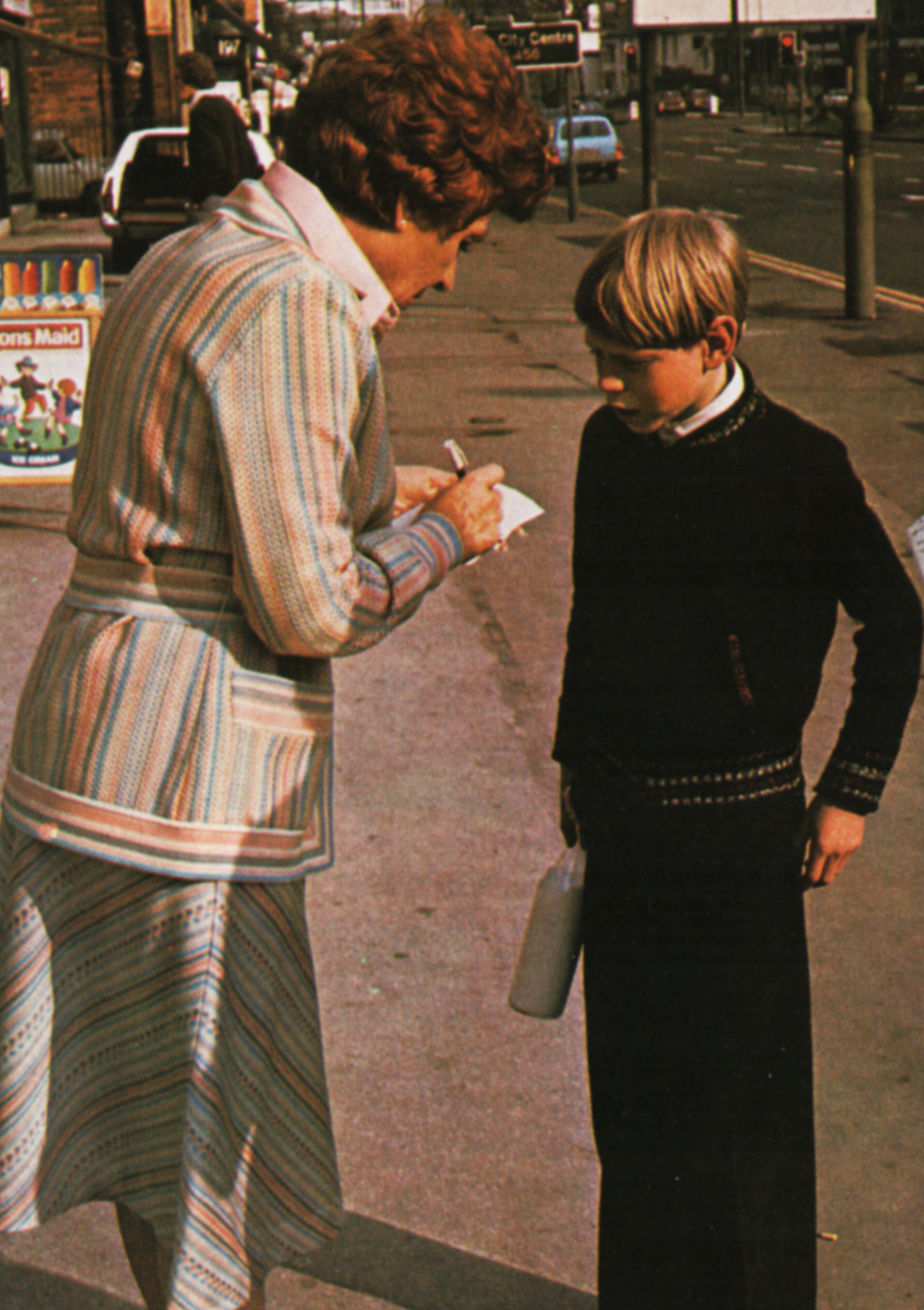
When Noele and her mother gave up their house at Ross-on-Wye to take neighbouring apartments, Noele knew exactly what she wanted to do with her spare cash. She had had a personal number plate for years – NG10 – and knew which car she wanted to transfer it to next – a Rolls-Royce Silver Shadow. But the Rolls caused a few headaches in the programme. Noele had always been filmed driving her own cars – and how could Meg’s sudden acquisition of a Rolls be explained? A legacy written into the script solved that problem.

By the early fifties, Noele realised that TV was about to have a great impact, superseding the theatres and music halls. She didn’t want to slip into obscurity, so took the positive step of going to New York, to learn all she could about television production and presentation. Her efforts paid off, for on her return to England she was offered a job as trainee director and advisor on women’s programmes with ATV.
But she didn’t stay behind the cameras for long. First came a theatre chat show, Tea With Noele Gordon, then Lunch Box, then Crossroads, as the new daily serial was to be called.
The part posed problems for Noele. Up to now she had appeared on the screen as herself – would viewers accept her in the role of Meg Richardson?
The answer was a resounding yes, and the show’s popularity mushroomed as viewers from as far away as Australia and Hong Kong voted Crossroads a monster hit. For Noele Gordon the series has also been a resounding personal success, and a very satisfying one.
When Noele was to be featured on the This Is Your Life programme all the other members of the cast were in on the secret. Reg Watson called Noele and asked her to take part in a promotion trailer. She was to walk through into the motel reception area say something about the motel and then add “And this is my manager, played by Ronnie Allen.” Rehearsals went well, and the take was ready to be made.
And this is where Noele nearly ruined the whole thing. She came through the door said the wrong lines, and stopped. Not until later did she learn that Eamonn Andrews had changed places with Ronnie, and had to dash off again and hide when the scene had to be scrapped. On the second take all went well, and Eamonn managed to take Noele by surprise, as planned.
It was on that show that rumours of a romance between Noele and Larry Grayson started. Larry laughingly asked Noele to marry him on the air, and she jokingly accepted. But some viewers didn’t see the joke, and telegrams and flowers started to arrive. It took quite a time to scotch the rumours, but Larry and Noele remain the greatest of friends.
Plain Jane Smith
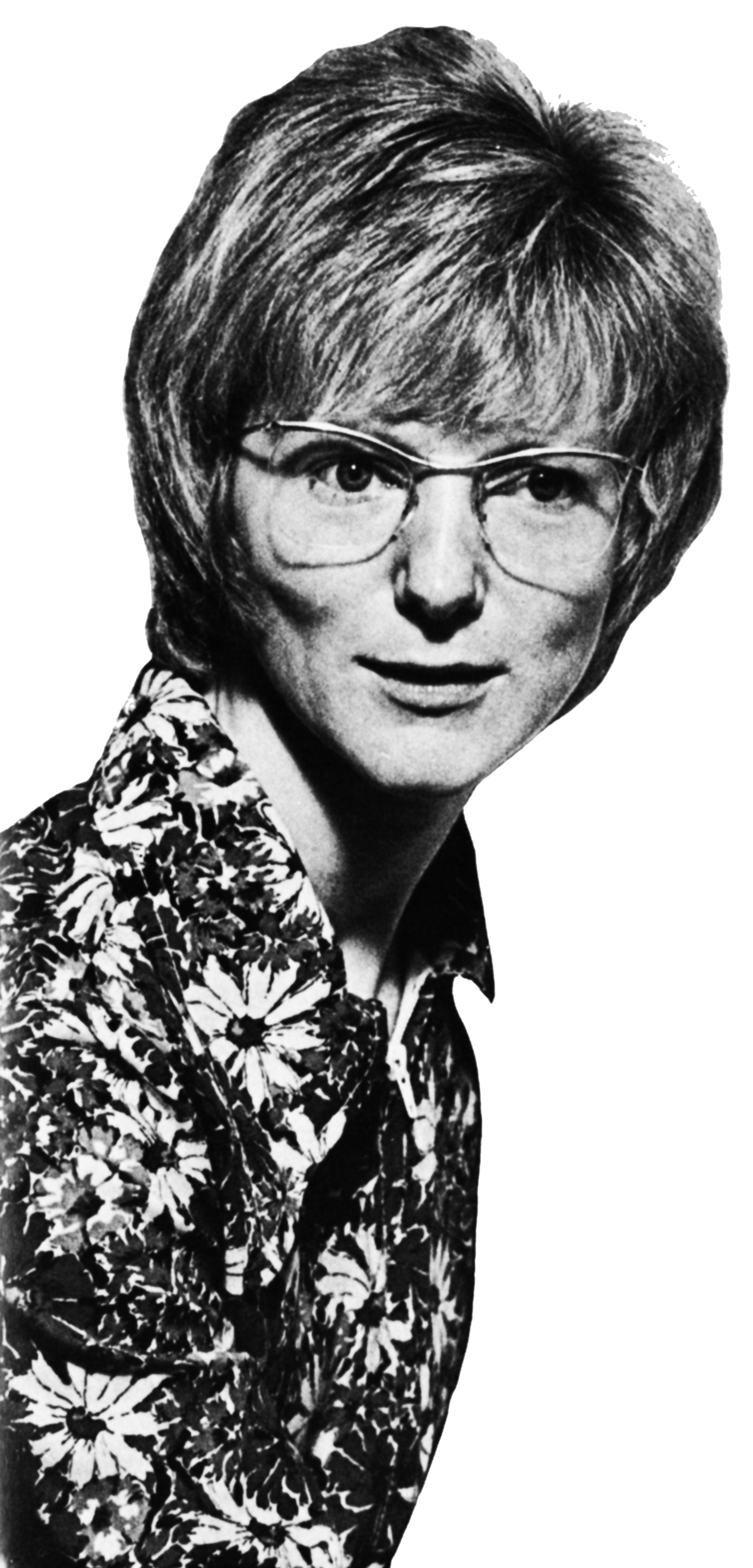
Jane Smith is not one of Crossroads’ most glamorous characters. Not for her the trendy elegance of Jill Richardson or the casual style of Kelly. In fact in many respects you could call her a ‘plain Jane’ type. Yet it is Jane’s very plainness and kindly, down-to-earth qualities which have endeared her to the thousands of Crossroads fans who watch each week.
Working as a waitress, Jane always has a kind word and a cheery smile for the faces around the Motel, whether they are well-known or unfamiliar. Happy in her job, she enjoys home life too, settled in a flat with Diane.
Yet, as veteran viewers will know, life hasn’t always been rosy for Jane. She had a disturbed background, with the implication that her mother was a prostitute. These days Jane, perhaps because of her past, has thrown herself into work as a member of the Salvation Army, and part of her great appeal is the way she is always ready to help others.
Sally Adcock, who plays Jane, smiles when she remembers her debut in Crossroads, about six years ago. She appeared for just one week, but a year later she was back and has been in the cast ever since. Like everyone else, though, she takes breaks, sometimes for holidays and at other times to do different types of acting. This necessitates the scriptwriters inventing plausible reasons, which is why a while back Jane contracted a nasty dose of pneumonia and had a long convalescence!
Sally was born into a theatrical family, and her acting career has been long and varied. There have been appearances in theatres around Britain, a children’s TV series, even a horror film! Now married, Sally and her husband relax in a cottage they have renovated themselves in Wales . . . when Sally’s not hard at work on the next Crossroads episode, of course!
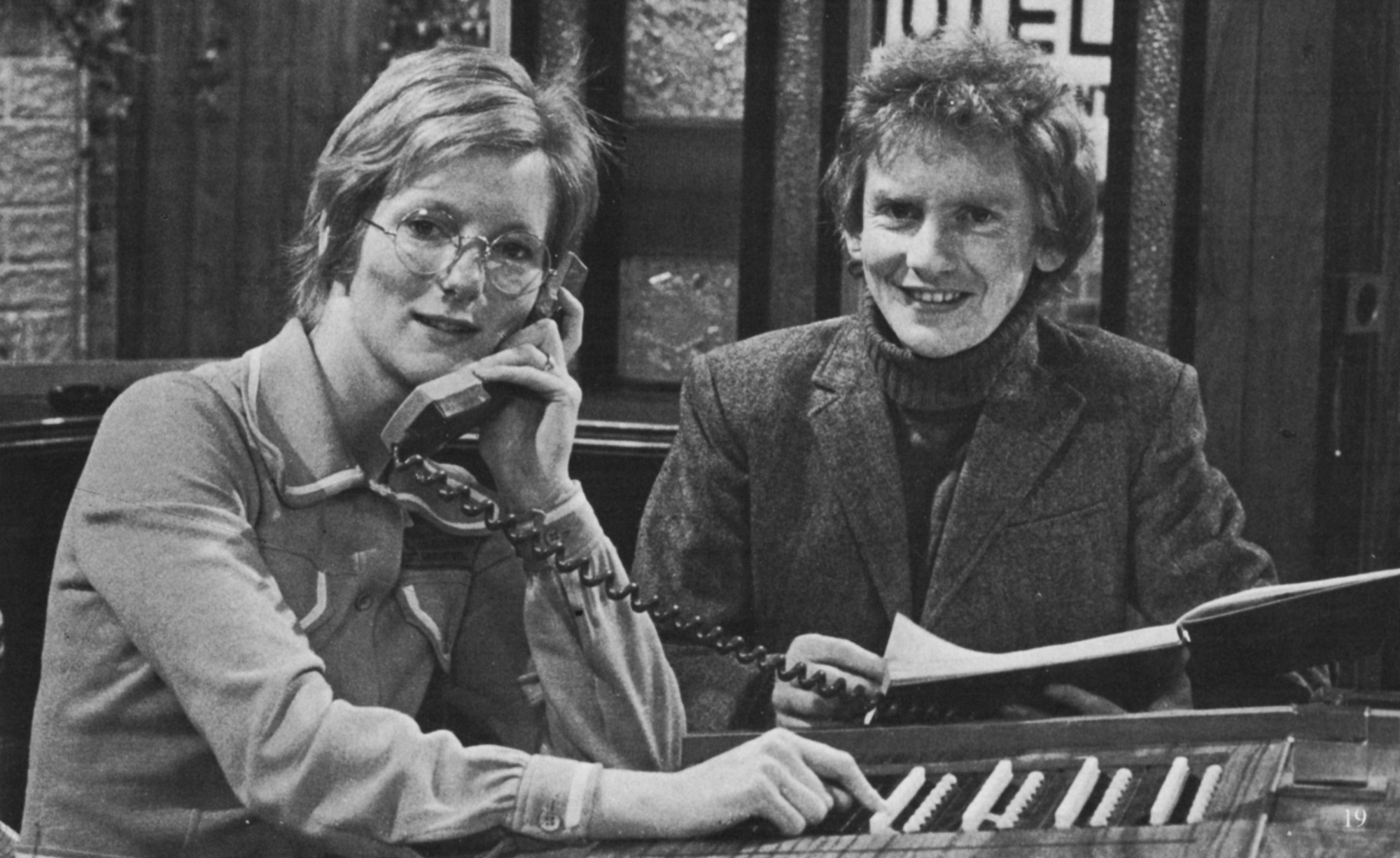
Love and Marriage

As the saying goes, the path of true love never runs smooth, and that has certainly been true for Meg Mortimer. Ever since she opened the Crossroads Motel in 1963, after losing her first husband, Meg has been on a romantic roller coaster with more than its fair share of downs, and her relationship with Hugh Mortimer was no exception. . . .
Hugh and Meg first met in the mid-sixties and they were attracted to each other right from the start. Hugh was rich, successful, good-looking and full of sophisticated charm. It was hardly surprising that Meg fell for him although she had her reservations about some of his more shady business methods. However, love conquers all, and Meg finally agreed to marry Hugh. After the engagement the romance continued to blossom – until Louise Borrelli appeared on the scene.
Louise was the beautiful daughter of one of Hugh’s American business associates, and she decided that, engaged or not, Hugh Mortimer was the man for her. In spite of the fact that the attraction was very one-sided, Hugh’s friendship with Louise caused a rift between Meg and himself and, anxious not to lose his fiance, he had a heart-to-heart talk with Louise, telling her that she wasn’t the girl for him. But it was too late. For Meg the relationship had soured, and it was almost a year before Hugh came into her life again.
Even then, she found it hard to rid herself of her doubts. Hugh took her to Paris for a romantic weekend, and although it was obvious that they were still in love, Meg wasn’t convinced. They separated, only to come back together again when Hugh was taken ill. For a time they feared that he was dying, and Meg realised that she didn’t want to lose him. When he recovered they talked of marriage and got engaged for a second time.
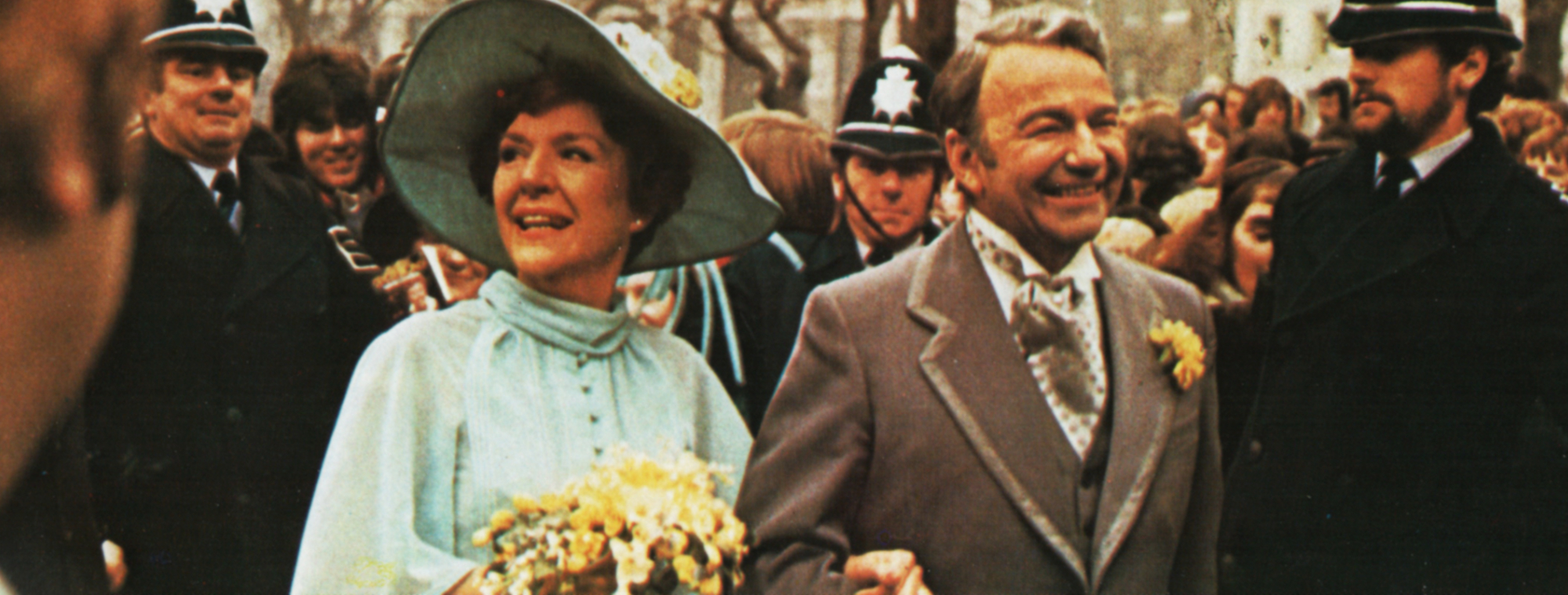
But this engagement was also doomed. Meg had flown to Tunisia on Hugh’s behalf to organise the opening of a hotel, while Hugh was in Australia sorting out some business problems. Or so Meg thought… until she received a telegram saying that Hugh had married someone else. The ‘other woman’ was Jane Templeton; young, pretty, and dying of a tumour on the brain. She came to England for an operation to remove it, and Meg’s bitter feelings had to be put aside. Jane told her that Hugh’s betrayal wasn’t as heartless as it seemed he had married her to give her a few months of happiness, knowing that she hadn’t long to live. She died in hospital, never regaining consciousness after the operation.
Anxious to put the past behind her, Meg worked harder than ever, and was soon being courted by the plausible Malcolm Ryder. Her barriers down after the heartbreak of her romance with Hugh, Meg married Ryder, and made a mistake that almost cost her her life. Ryder was a weak, unscrupulous man, and when he found himself in financial difficulties he decided to poison Meg and claim the insurance money. Fortunately he was discovered, and when confronted with his crime he walked out of the motel and out of Meg’s life. Some time later news came that he had burnt to death in a car crash in South America.
But what of Hugh? He had never forgotten Meg, and when they met again, some eight years after their first meeting, they fell in love all over again. Hugh proposed for the third time, and soon Meg was wearing engagement ring number three – a large, square-cut diamond surrounded by sixteen smaller diamonds. Surely nothing could go wrong this time.
Unfortunately, it could. News came that Malcolm Ryder was still alive, and the shock made Meg lose her memory for a time. She recovered slowly, faced with the awful truth that she was still married – to a murderer. Then her luck changed. Ryder came back to England and had the gall to turn up at the motel. Hugh immediately alerted the police and Ryder was arrested. Divorce proceedings followed, and at last the preparations for the wedding could begin.

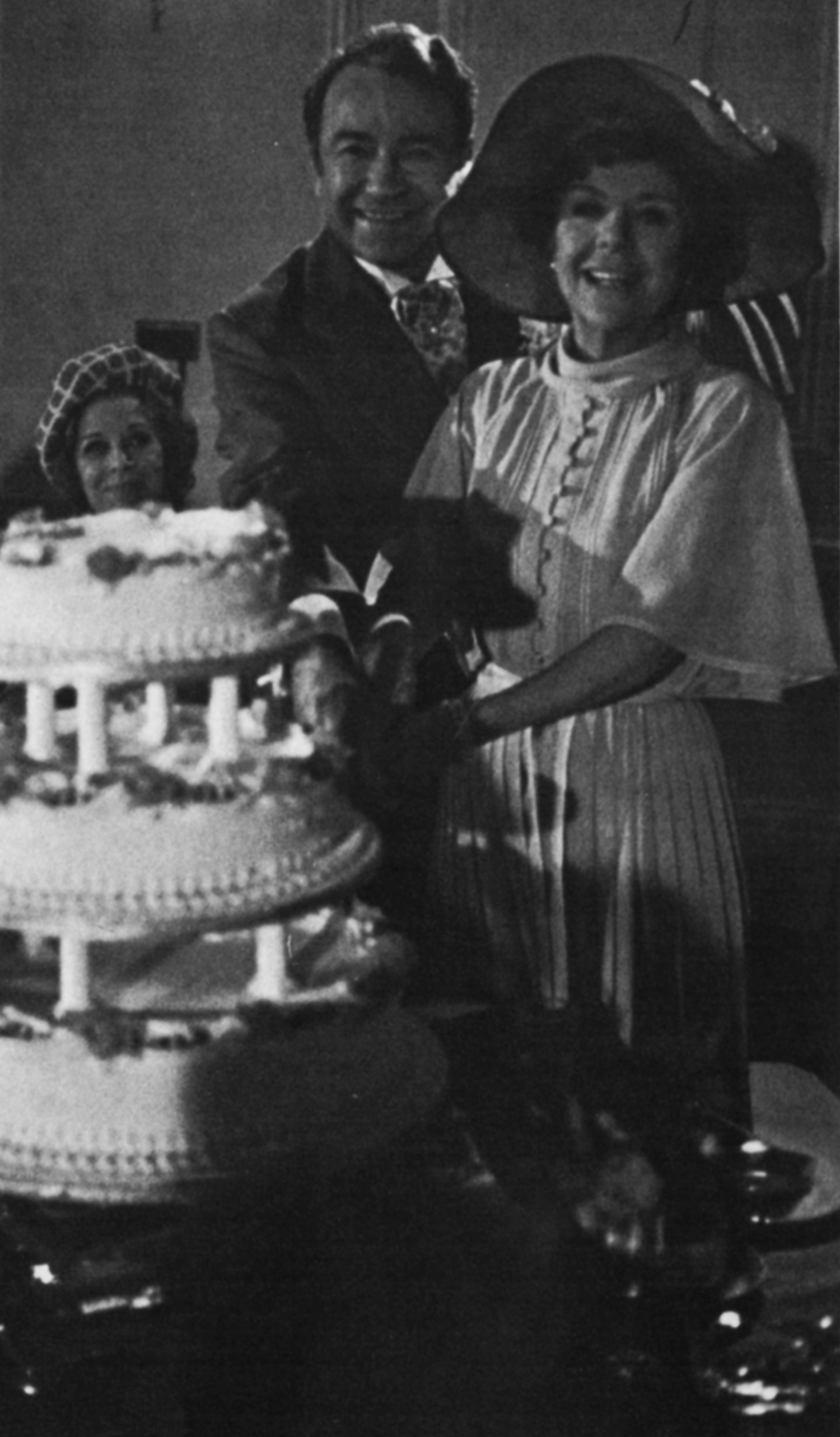
Soon Meg was caught up in a whirl of activity, choosing her trousseau, planning the reception, ordering the cake, invitations and flowers and, of course, making sure that the motel ran as smoothly as ever. For the actual ceremony Meg chose a pale, mint green organza dress, to be worn with matching shoes and a large straw picture hat trimmed with yellow and white flowers and fine rouleaux in the same material as the dress. Then she picked out a flattering cream jersey dress as part of her going away outfit; to be worn under a very beautiful mink coat, plus several glamorous dresses for those romantic evenings on the honeymoon.
At last the preparations were complete, and the great day arrived. The wedding took place at the Birmingham Registry Office, and was followed by a Service of Blessing in St Philip’s Cathedral. Meg and Hugh arrived in a white Rolls, and as Meg said, it could have been a Royal wedding, they felt so grand! Needless to say, the bride looked radiant and the groom obviously felt very proud . . . as well he might after waiting ten years for this very day.
After the service, friends and relatives assembled for photographs, and then it was on to the reception at the Droitwich Hotel. If Hugh was nervous about his speech it didn’t show, and everything went off without a hitch. When at last it was time to leave, the white Rolls was there at the door, and it was a funny thing, but the chauffeur looked exactly like Larry Grayson!
It was a happy ending to a very happy day but, sadly, Meg and Hugh were to have just three short years together before Hugh’s tragic death made Meg a widow for a second time. After the anguish and bitterness of those first black weeks Meg has regained some of her old fighting spirit, but the wounds are still there, wounds that only time can heal.
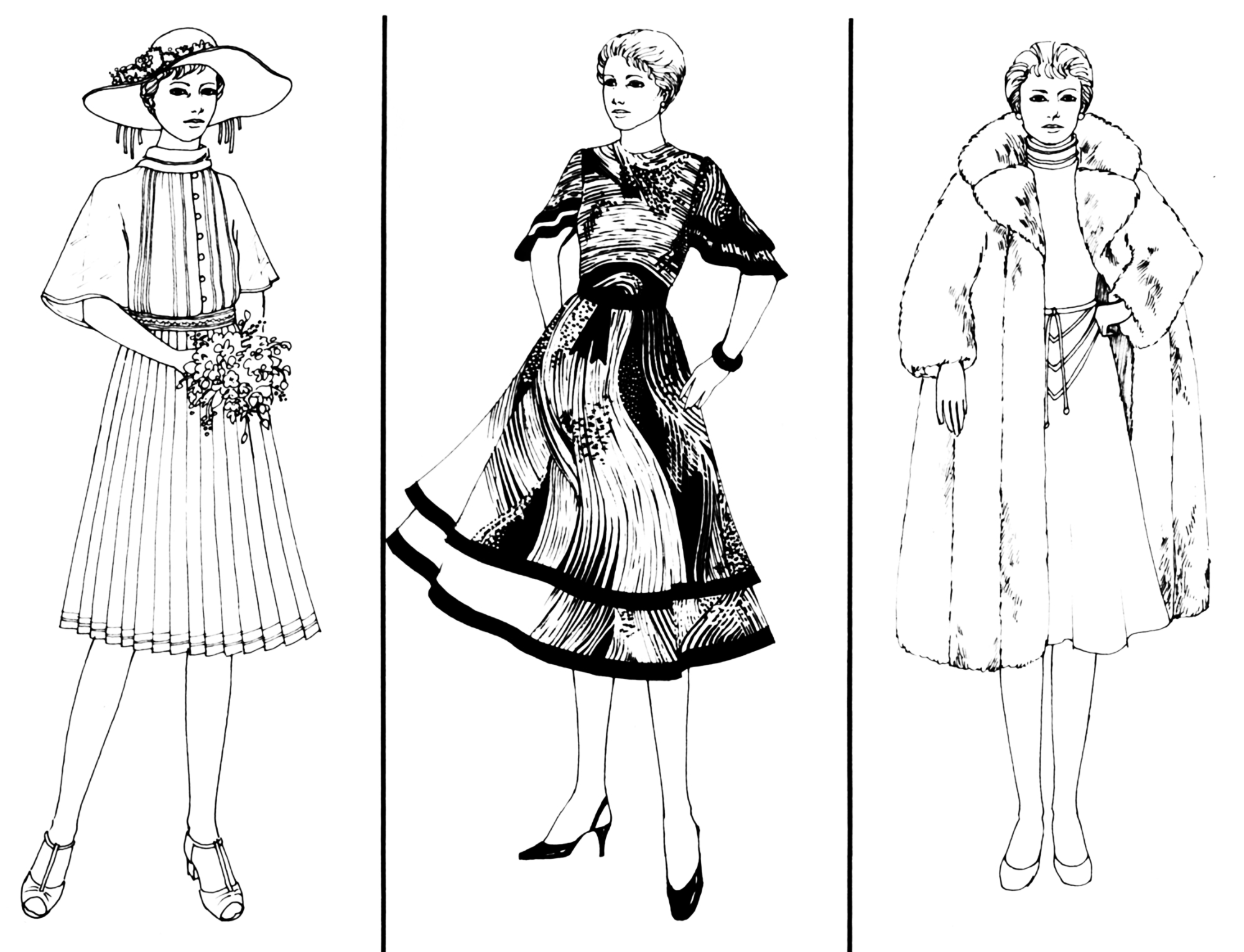
CROSSROADS Royal Visitors
The whole cast as well as the people behind the scenes were thrilled when Princess Alexandra visited the Crossroads studios. She asked Noele Gordon what was to happen in the next scene, and was intrigued to learn that Noele, as Meg, had to faint. She was curious to know how Noele could fall heavily without hurting herself, and asked to see just how it was done. Noele did just as she was asked, and fell into a graceful heap right at the Princess’s feet!
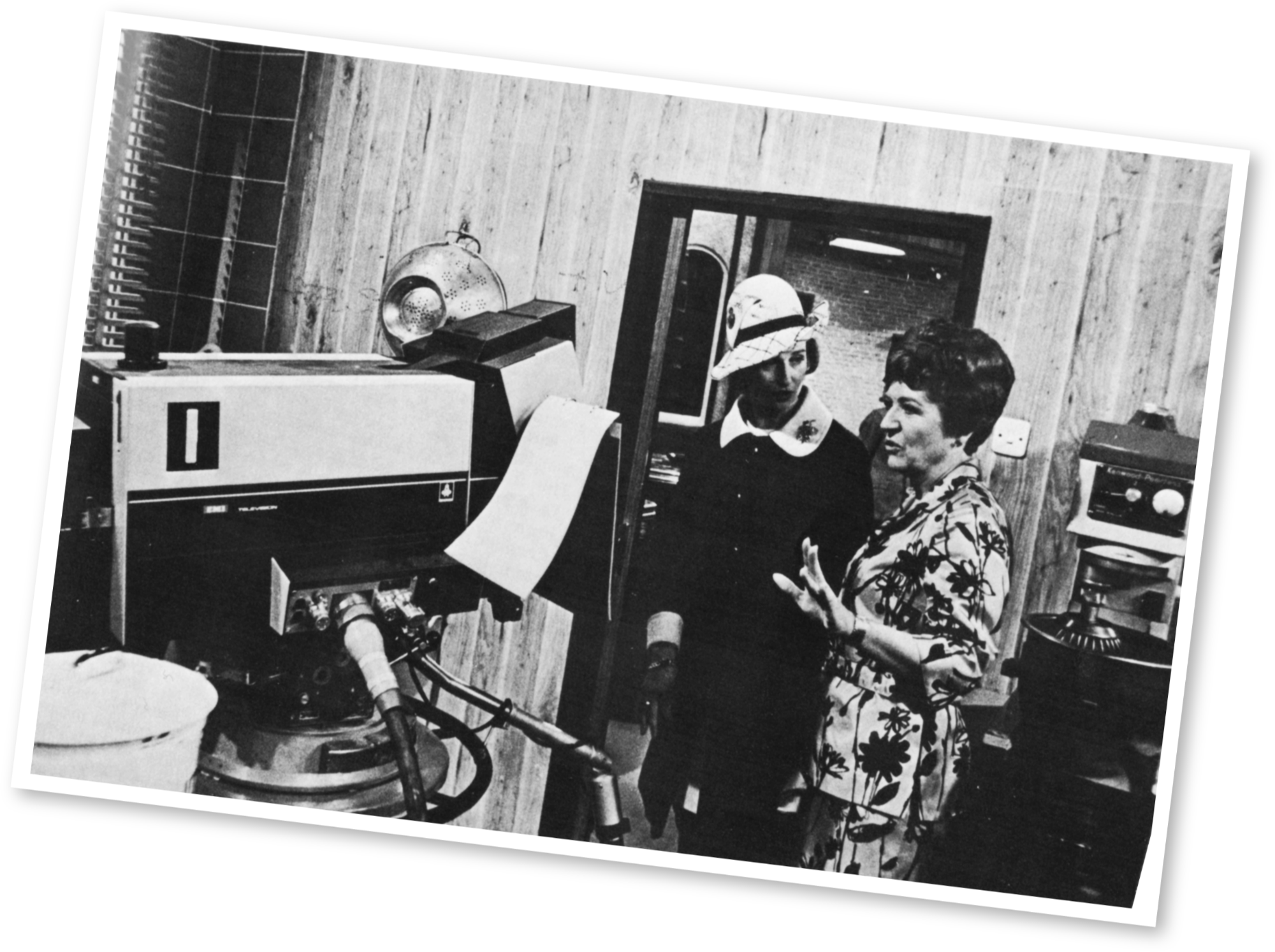
Another Royal visitor to the studios was Prince Philip, who told the cast that the Queen and other members of the Royal Family sometimes watched the programme. Surveying the set, Prince Philip noticed Maggie Hanley, dressed as a tart. “Who is she supposed to be?” the Prince asked Noele Gordon.
Noele didn’t know quite what to say, and hedged around the question for a while. But the Prince was persistent. “But why is she dressed up like that?” he asked.
“She’s supposed to be playing a lady of easy virtue, but I didn’t like to say so.” said Noele at last.
Prince Philip laughed loud and long. “Whyever not?” he asked. “I do know what they are, you know!”
CROSSROADS CHRONICLE
Like all closely-knit communities, King’s Oak and the Crossroads Motel have had their share of joy and sadness. Babies have been born and folk have died and there has been the happy sound of wedding bells for several couples.
Brian Jarvis, Meg’s nephew, married his father’s secretary, Janice, and all seemed set fair for the young couple when they were married in the parish church. But later Brian began to drink heavily. He went away for a ‘cure’ only to find himself divorced on his return
Another wedding at the village church was that of waitress Christine Fuller to milkman Ralph Palmer. The couple later started a smallholding and everyone hoped that it would be a great success.
One wedding which caused much surprise was that of the handsome young vicar Peter Hope to Marilyn Gates, who at first refused Peter’s proposal because she felt that she was not cut out to be a clergyman’s wife. But Peter finally persuaded her, with a little help from his bishop, and now the young couple are doing missionary work in Africa, where Peter finds Marilyn an ideal helpmate.
There was a delightful real-life postscript to this wedding when the dress worn by Marilyn was given to a young orphaned hospital patient named Irene who was suffering from a hereditary disease. Irene was a keen Crossroads fan and was shortly to marry her carpenter sweetheart.
After recovering from the traumas of discovering that she had bigamously married John Crane, Jill Richardson is now happily married to Stan Harvey, with an adorable small daughter, Sarah-Jane, who is the apple of Meg’s eye. Sarah-Jane is doubly precious because of Jill’s previous miscarriage, and the disappointment of giving up their ‘adopted baby to Sheila. Although many people were surprised at Jill’s choice of husband, the Harveys are very happy and Meg is sure that, despite their different backgrounds, Stan and Jill can face the future confidently together.
Romance has no age barrier and some time ago Wilf, Stan’s plain-spoken father, found himself a new wife in Myrtle Cavendish, which pleased everyone at Crossroads very much. Myrtle, who worked in a pub, and Wilf, moved into a flat above Stan’s shop.
But babies can cause unhappiness as well as bring joy as Jill and Stan found to their sorrow. They unofficially adopted his sister Sheila’s baby but when Sheila married the baby’s father, Roy Mollison, later on, she took the baby back. Jill was very upset but soon she had a daughter of her own to make up for her loss.
But another baby was responsible in an innocent way for the breakup of Vince Parker’s marriage. Vince, the friendly King’s Oak postman, married Diane Lawton, fully prepared to accept her baby by film star Frank Adam as his own. But when Diane accepted financial help from Frank Adam the marriage began to crumble; now the couple are separated and Vince lives in London, a sad loss to King’s Oak.
Two of the managers of the Motel have also found romance which ended in wedding bells. Paul Stevens and waitress Sandra Gould are now running a hotel in Guernsey, while Tessa Wyvern and her husband Nick Van Doren moved into their own hotel soon after their marriage.

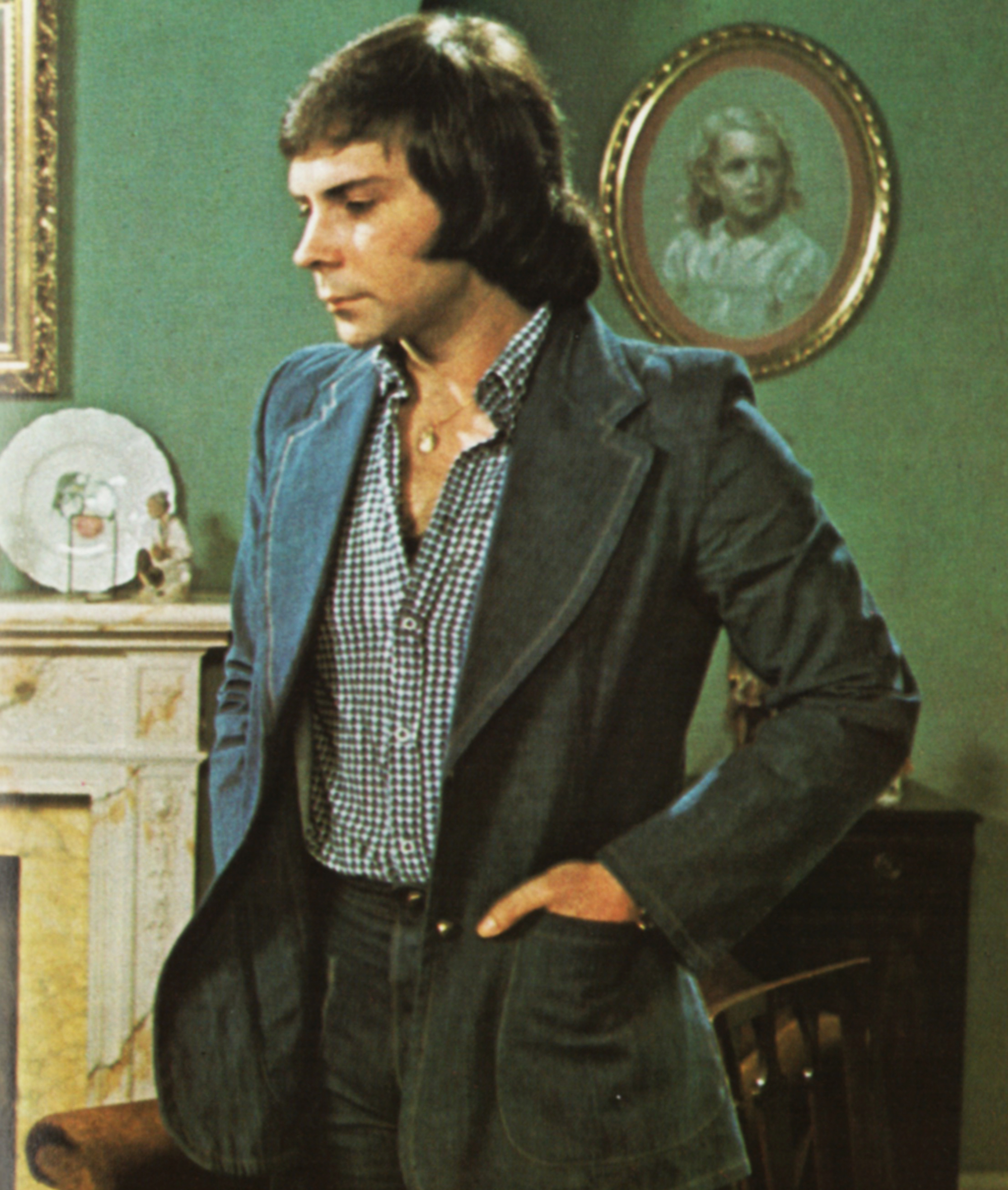
And what of Meg herself? An on-off romance with Hugh Mortimer for some ten years resulted in a marriage to Malcolm Ryder with disastrous results. Malcolm tried to poison her for the insurance money he would collect on her death. When this attempt failed he fled and he was reported dead abroad.
Hugh entered her life once more and it seemed at last that Meg would find happiness, but Malcolm returned to England. Still alive, he had passed off another body as his own, but later he was returned to South America to stand trial for murder, and Meg was free to start divorce proceedings.
At last it seems that, after years of heartbreak and waiting, Meg and Hugh are to find happiness together at last. A Registry Office ceremony is followed by a Blessing at St. Philip’s Cathedral crowded with family, friends and well-wishers, setting the seal on a day Meg will always remember.
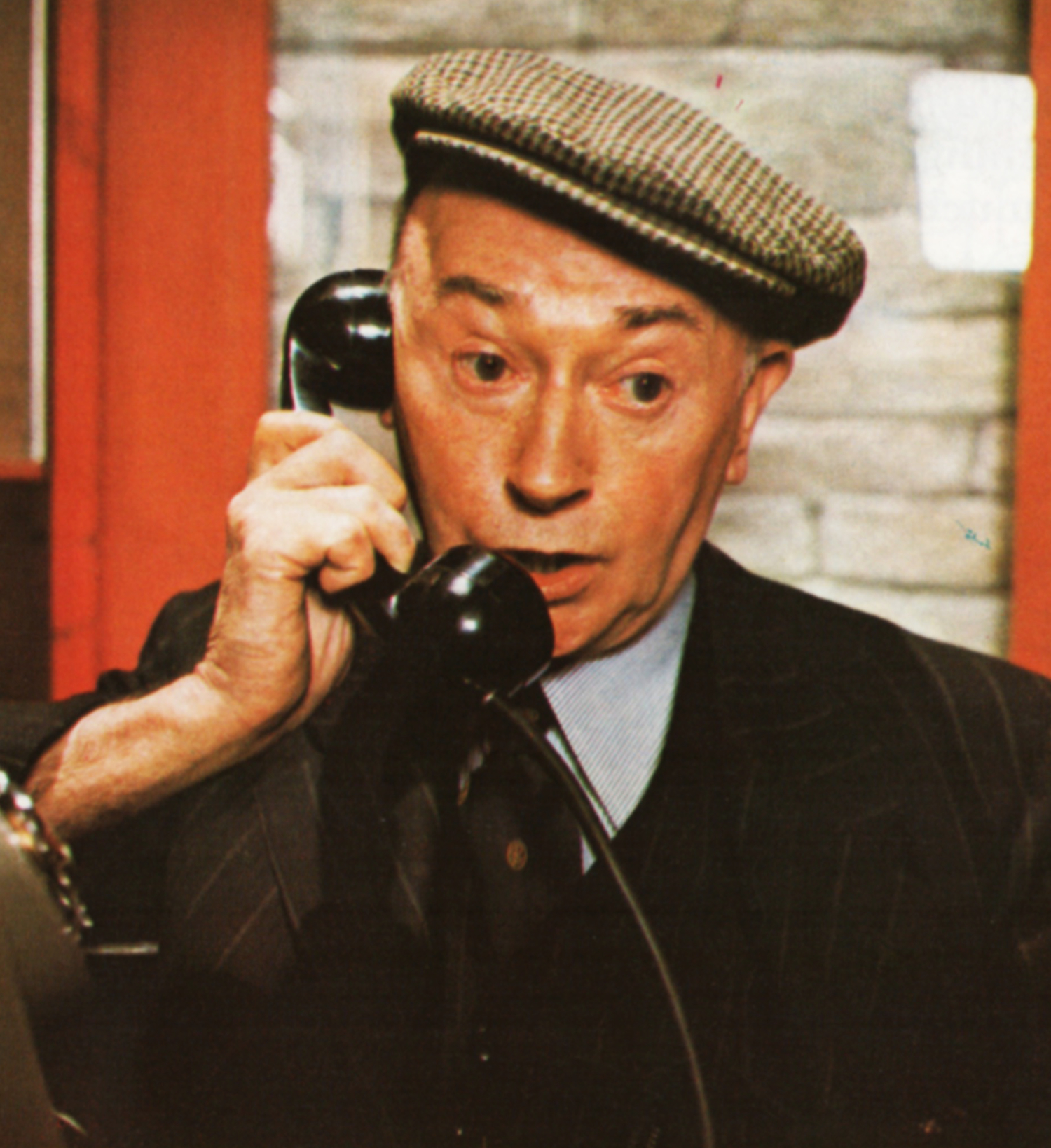
Years of happiness and contentment seem ahead of them, but the fates decree differently. On a trip to Australia Hugh is kidnapped by terrorists, he suffers a fatal heart attack . . . and once again Meg finds herself a widow.
But still enjoying married life are Meg’s brother Andy Fraser and his wife Ruth Bailey, whose wedding was the cause of great celebrations in the 500th edition of Crossroads. After his marriage Andy left the merchant navy, which had been his life for so long, and at first the couple had a grocery business and later a travel agency.
But life has its sad moments as well as its times of joy, as several Crossroads people, notably Meg and her family, know to their cost.
Meg has lost both a dear sister in Kitty Jarvis and a beloved husband, but life goes on.
Bennie, from the farm at King’s Oak, lost Maureen, the girl he was to marry, in an accident on their wedding day, and now he makes a pilgrimage to her grave to relive their happy times together.
The staff at Crossroads were all terribly distressed also when Josefina got a letter telling her that her husband Carlos, their popular Spanish chef, had died in a fire, heroically trying to save some trapped children. And when George Petersham tried to commit suicide by jumping under a train because of becoming an alcoholic, the staff and all his fans were greatly shocked, for George has been in Crossroads since the first episode.
Tragedy hit the motel again when a blind girl was kidnapped by Edge Sharp, a gunman who killed a policeman and injured Angela’s father as they tried to rescue her. But later there was new hope that Angela’s sight might be restored.
So it goes on, as the lives of Meg and her family and staff and the customers at Crossroads are interwoven in a pictorial patchwork of bright and dark days when human emotions, good and bad, rule the lives of everyone.
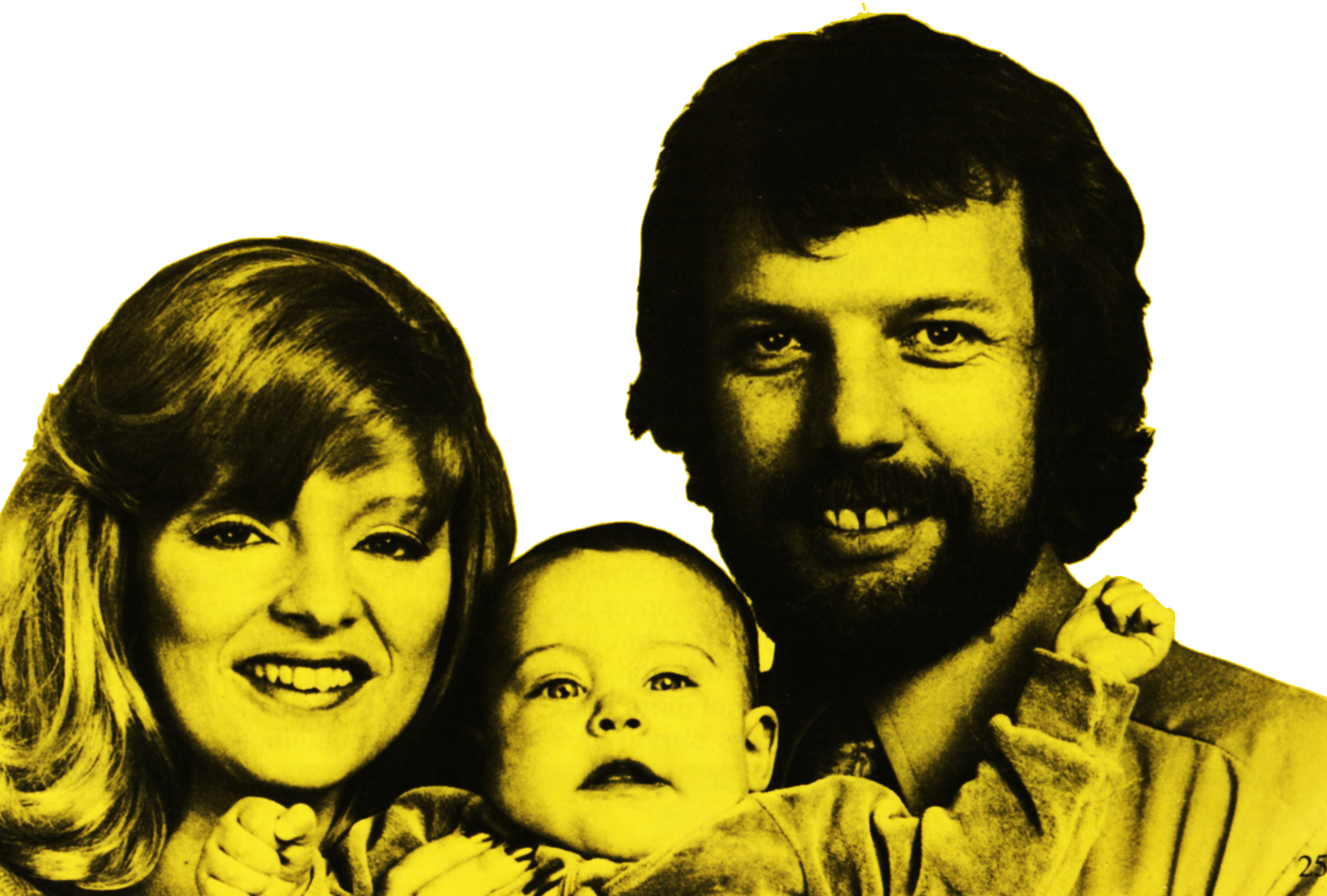
Green fingers
Carney, that lovable and kindly old character who has long been a Crossroads’ favourite, knows just about everything there is to know about gardening – and then a little bit more. Plants seem to respond to his tender touch, and he takes great delight in planning colour schemes for each season, and discussing his new ideas with Meg, who is herself keenly interested in the delights of the garden.
We have persuaded Carney to give us one or two of his tried and tested gardening tips to pass on to Crossroads’ fans. Although ‘persuaded’ isn’t really the right word. Carney loves talking about the garden almost as much as he loves gardening, and he didn’t really take much persuading at all!


ROSES
Carney loves roses, and he always makes sure that Meg has a rose bowl display in her sitting room whenever the blooms are at their finest. He told us that it is a mistake which many people make simply to cut the blooms and plunge them straight into a vase. Carney always leaves them in a cool, dark and airy spot for an hour or two, and he makes sure that they are in warm water, right up to the base of each flower.
Before he puts them into their display container he carefully peels away the outer stalk for half an inch above the cut, to allow the water to reach the flower more easily. Carney doesn’t believe in hammering the stems, but he sometimes makes a half inch cut up the centres.
Out in the rose garden he removes all dead blooms as soon as they begin to fade, so that the blooms do not begin to form seed pods. This ensures that the bushes will continue to bloom right through the summer, with an occasional feeding – not more than once a fortnight – to keep the colours strong and attractive.
SHRUBS
Carney loves gardening so much that spending hour after hour at work is really no hardship for him, but on the other hand he knows that there are many people who do not have sufficient time – or inclination! – to follow his example. Most people though, love to see their garden looking neat and colourful all year round, and to these amateur gardeners Carney recommends planting shrubs.
Shrubs come in all shapes and sizes, and all colours too. Some are chosen for their blooms, some for their distinctive shapes, and some for the attractive colours of their foliage, which often remain throughout the winter.
Once planted they need only a minimum of attention, and they will grow to become attractive features in any size of garden, whether they are planted singly or grouped together for a fine display.
Choosing shrubs in an engrossing and pleasureable activity, whether you are wandering round a garden centre or nursery, or browsing through colourful gardening catalogues at home. Points you will have to bear in mind are how high the shrub will grow, whether it will also spread widthways, and what kind of soil and planting position it will require. There’s a wealth of information in catalogues and magazines, and for a really comprehensive guide you can invest in a book such as the Observer Book of Trees and Shrubs, which is an extremely useful handbook to consult.
Carney makes a point of choosing only the best quality shrubs, even though sometimes it means spending a little more. There are some exceptionally cheap plants on sale each year, and many people are tempted by them, but as a general rule “you get what you pay for”, and these plants will never give as fine a show as those bought from better sources.

FRUIT AND VEGETABLES
Even the smallest garden usually has room for a vegetable patch, and this kind of gardening can be very rewarding and enjoyable. Some vegetables are simplicity itself to grow, and you can generally be assured of a good crop of peas, beans, radishes and lettuce, for instance.
Other vegetables are trickier, and for the amateur gardener with little time to spare, the speciality items are usually best bought from the greengrocer.
The vegetable garden will benefit from careful thought and advance planning, to ensure that something will be growing almost all year round. Any good vegetable growing guide will include a timetable of planting which you can follow. Cloches and cold frames will lengthen the growing season, and if you have room for a greenhouse you will be able to work green-fingered wonders!
Carney has recently tried out a vegetable which is not very well known in Britain, and he has been very pleased with the results. It is called kohl-rabi, and it grows well from seed. The plants have a mass of leaves, and the edible part grows above the surface of the soil. It should be eaten when it is about the size of a tennis ball.
Peel off the purple skin, and boil the vegetable for about twenty minutes. Then slice thinly and toss in melted butter. Served with a meal, or on its own as an unusual starter, the delicate flavour of this unusual vegetable is a real delight.
THE ROCKERY
If you’re looking for a new feature to enhance the appeal of your garden, however small, then you might well consider building a small rockery. Well stocked with alpines and heathers these attractive gardens form an island of interest, and are remarkably easy to maintain.
Over the years you can add attractive stones or large shells, and perhaps one or two simple ornaments, for instance a small rustic bird table. A selection of heathers can be chosen to ensure a burst of colour all year round, and even in the winter months the foliage of those no longer in bloom will still be attractive.
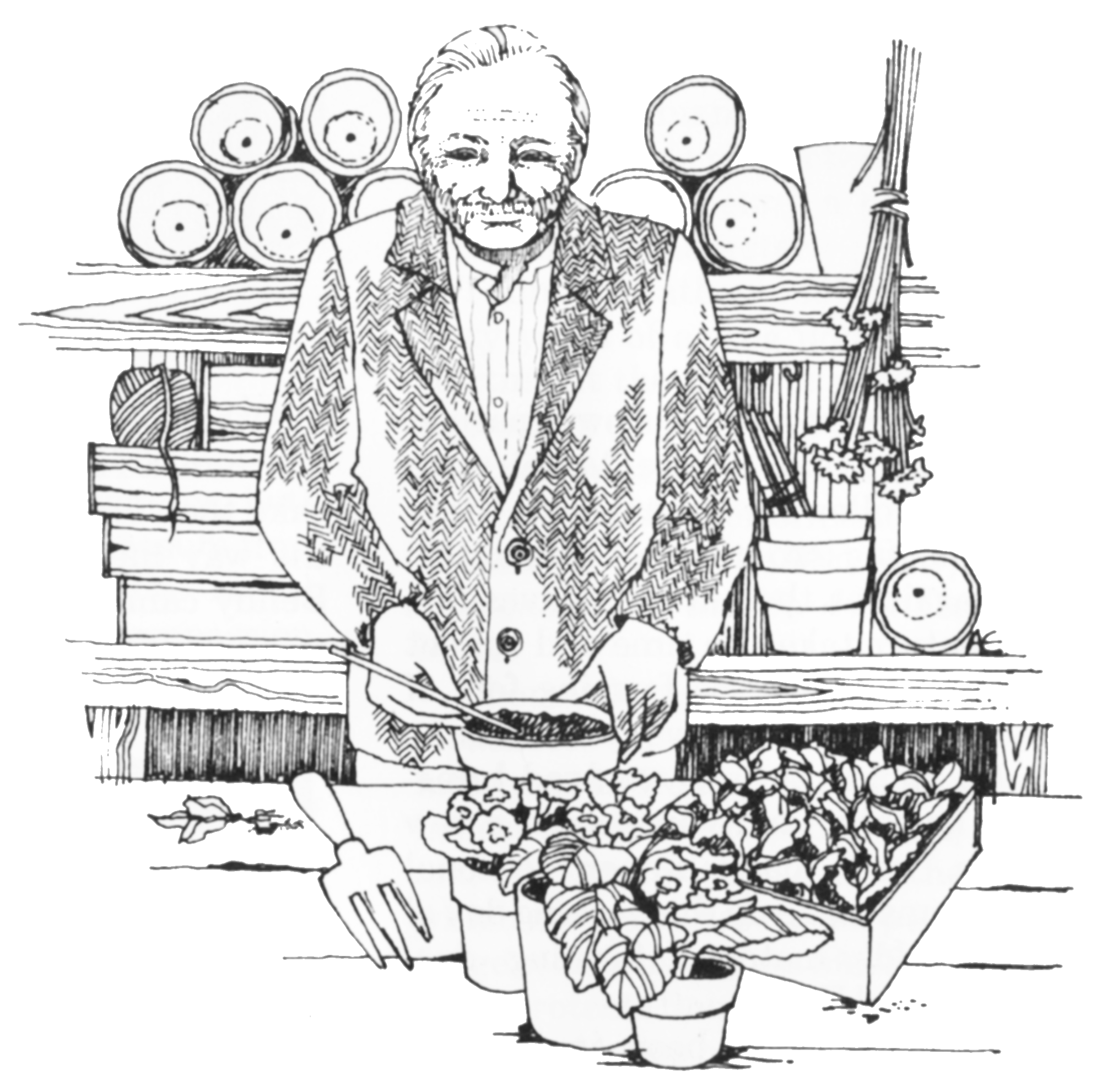
This feature was written before the tragic death of actor Jack Woolgar, who had played Carney for many years. Crossroads’ senior producer Jack Barton paid tribute to him when he said: “Jack Woolgar was loved and respected throughout the profession. He will be sadly missed.”
The farming folk of King’s Oak

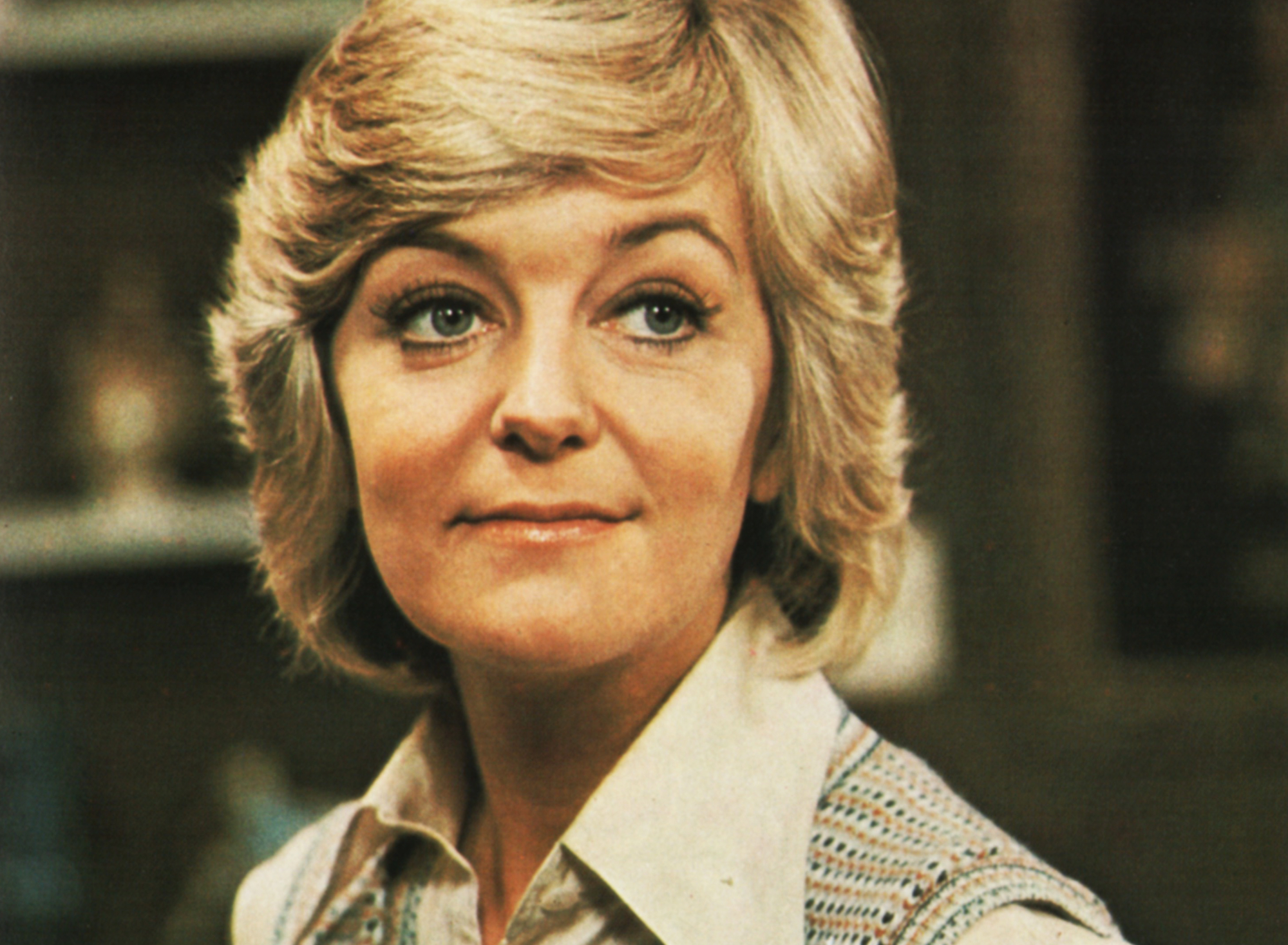
Life moves at a much slower pace at the Farm than at the Motel, with spring following winter, the days lengthening into summer and shortening again as the autumn leaves fall, for nature takes its time and cannot be hurried. But the farming folk of King’s Oak still have problems to solve. Incidents happy and sad, bringing laughter and sometimes a few tears, and many minor seasonal problems make up the working day of that oddly-matched farming duo, Benny and Ed.
Lately Ed has been in hospital suffering from a slipped disc. He worried about how Benny was coping, although Diane managed to install a friendly housekeeper named Doris Luke to help out and make sure that there would not be absolute chaos in the kitchen when Ed returned.
His stay in hospital gave Ed a little time to reflect on his life. Like Benny he loves the land and all he wants is to be allowed to make a decent living from the soil, and to be allowed to enjoy the quiet beauties of nature around him. An honest and hardworking man, he is not too ambitious, and although grateful for help in the past from people like Hugh Mortimer, who was genuinely trying to help Ed make more use of his land, Ed resents the men who see land as a profitable asset and not as something which feeds man and beast and pleases the eye. He is afraid that one day someone unscrupulous and far cleverer than himself will find some way of tricking him out of his land, and leaving both him and Benny homeless and without jobs.
Although this secret fear is always with him, Ed is more afraid for Benny’s sake than for his own, for because of the way life has treated him, poor Benny cannot think as clearly or as quickly as others and he is far more trusting and much more easily hurt.
He is like a playful puppy, eager for friendship, and willing to accept teasing if it will make people like him.
He cannot understand that there are girls like Josie who, after teasing Benny and arousing his interest in her, makes him the butt of her unkind jokes and dubs him ‘Barmy Benny’.
This Benny certainly is not, he is just slow, but he responds immediately to kindness and understanding, both of which he gets in full measure from Diane, Ed’s niece from the Motel. Diane treats Benny with compassion, affection and understanding. She listens to his problems and tries to help him to solve them.
Benny found Diane a tower of strength when tragedy struck his life. A family of gipsies named Flynn occasionally visited the Farm – indeed Seamus sometimes lends a hand -and Benny fell in love with Maureen, a really beautiful gipsy girl. To everyone’s amazement, Maureen agreed to marry Benny, but on the morning of the wedding she was killed cycling to see him to tell him something important.
Everyone expected poor Benny to go to pieces, but he reacted with a quiet dignity which impressed all his friends. But none of them realised that Benny would always be tormented by wondering just why Maureen wanted to see him … if she had intended calling off the wedding because she realised she did not love Benny enough.
But although he sometimes wondered about another of the gipsies, Pat Grogan who worked at the Motel and visited the Farm on his day off, Benny insisted that Maureen had been ‘his girl’ and he is saving up hard to buy a headstone for her grave as his last visual token of his love.
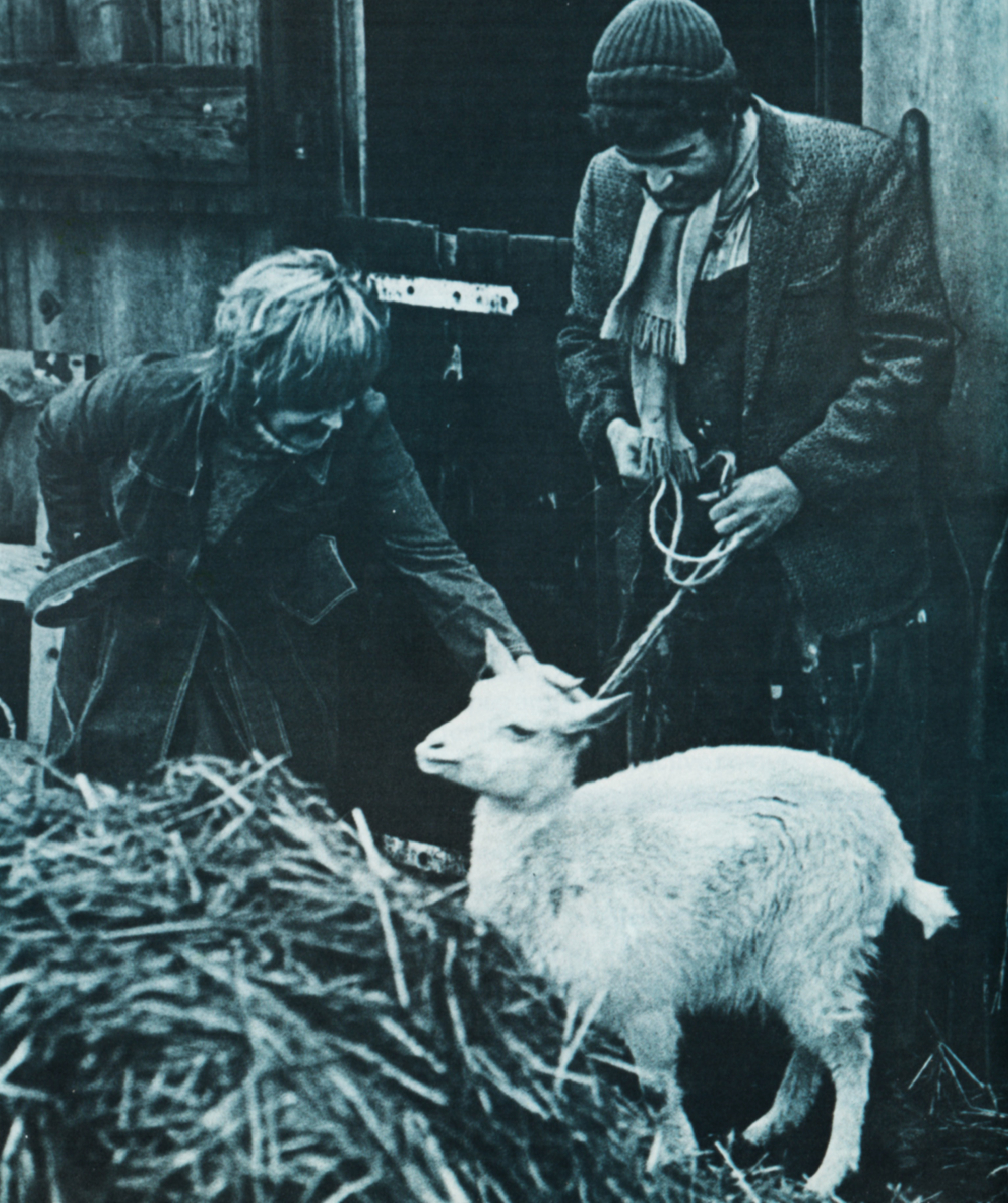
The two actors who play Benny and his ‘Gaffer’, as Benny calls Ed, are in no way like the two farming characters they play.
Paul Henry went to drama school which was followed by a spell in rep and then it was into TV in Shakespeare and other classical dramas. Since then he has been a popular member of the Crossroads cast for several years. Benny is not an easy character to play, he could so easily become a buffoon instead of a human being who needs care and understanding because he is mentally growing up much slower than people in his own age group.
Paul Henry manages to portray this trait of Benny’s character very well, and he makes Benny a completely sympathetic character.
Thomas Heathcote can claim some forty years of acting under his belt, starting at the Old Vic and going on to a series of plays and films both in the theatre and in TV, which include his memorable performance as the Common Man in the film Man for all Seasons, about the life of Sir Thomas More.
Thomas brings that extra touch of Heathcote magic to all his varied roles, and in Ed he has created a real honest-to-goodness countryman, gruff and bluff, yet with a love of the land which seems to have been passed on for generations to men like Ed.
He protects Benny from the outside world and helps him all he can, while in return Benny likes and respects his ‘Gaffer’. On occasions they have had differences of opinion and Benny has left the farm angry or depressed, but he has always returned.

DIANE… a happy ending?
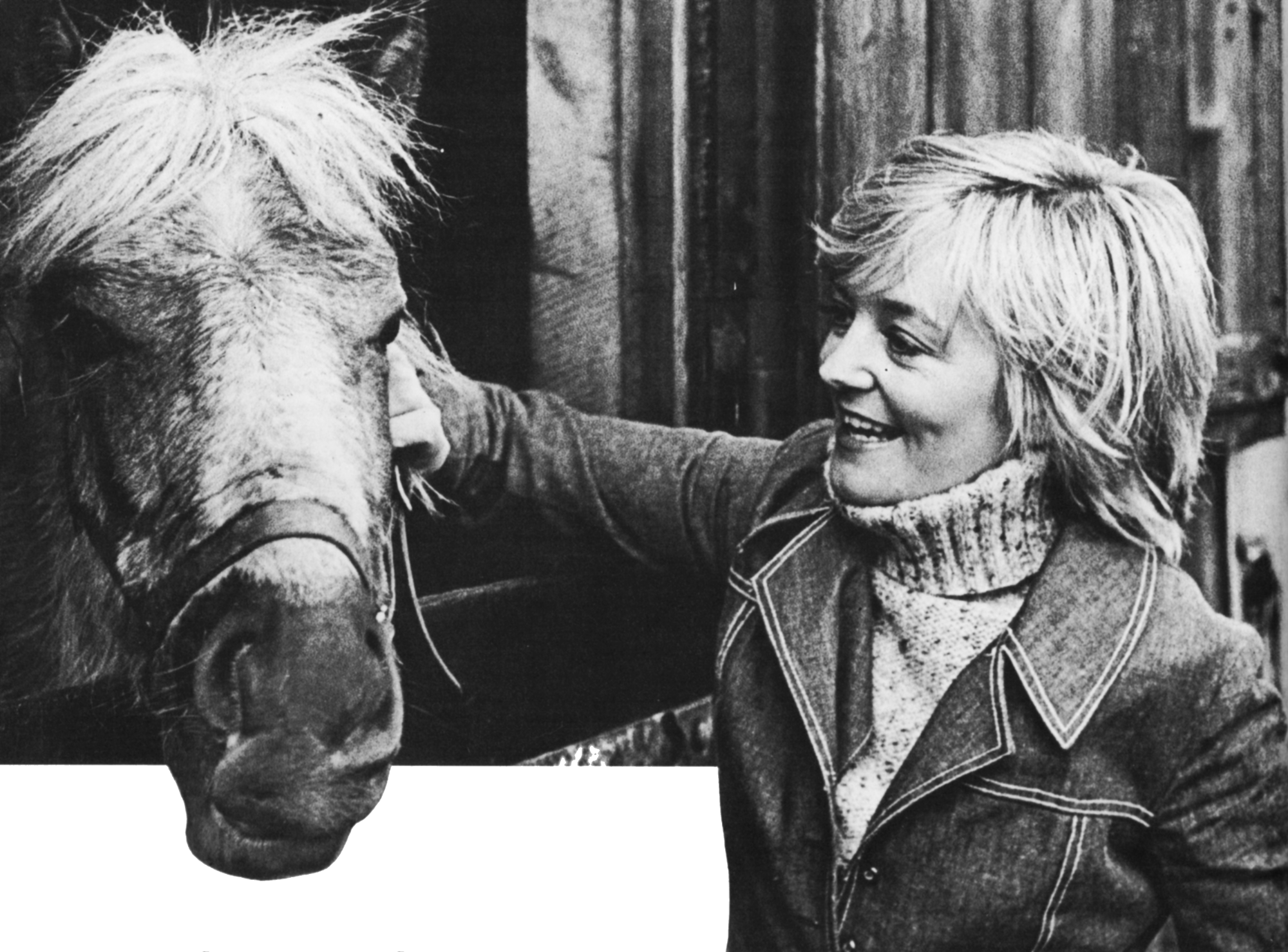
Diane’s life at the Crossroads Motel has had its fair share of ‘ups’ – and more than its fair share of ‘downs’. In fact Diane could be called the ‘problem child’ of the Motel. In ten years she has gone through crisis after crisis. . . .
At first everything seemed set for Diane Lawton. She got married to Vince Parker, the kind, dependable postman. But she was restless, wanted something more from life, and sadly the marriage broke up, despite all Vince’s efforts. After this, several affairs followed, most of them with unhappy endings. Diane seemed to drift, her job as waitress being the only steadying influence in her life.
Other traumas followed, and Diane took to drinking for a while … then there was the saga of Frank Adam, the movie star who fathered her illegitimate child Nicky. Frank took him to America and, despite all her efforts, Diane has seen little of her son since.
Sue Hanson, who plays Diane, agrees that all these experiences could well have soured Diane, but she believes that they have only made her wiser and stronger. Sue’s life, of course, has been quite different. After Drama School she went on the stage at the famous Mermaid Theatre, and later starred in a rock and roll film. There was a stint with the stage version of The Boyfriend, some TV work … and then Crossroads. Although it’s very hard work, Sue loves being part of the Crossroads team, and she finds the character of Diane very stimulating. “Everything I can’t be, I try to put into Diane,” she says. “I try to make her very complex and above all interesting!”
Another difference between Diane and Sue is that Sue is very happily married. She met Carl Wayne, who was a member of the group The Move, in 1968. They live in Birmingham, within easy reach of the ATV studios and Sue’s parents, who live in Lancashire (Sue was born in Preston). It’s also an ideal centre for Carl, who tours, playing nightclubs.
So, what now for Diane? She does seem to have settled down rather now that she’s a frequent visitor to her uncle Ed’s farm. After a long stay there to sort out her problems she is still very attached to the place, and the atmosphere there seems to help. There’s Benny, too – the backward labourer she has taken ‘under her wing’. Sue believes that Benny is a kind of substitute for the son that Diane never sees, and that the protective friendship, with Diane teaching Benny to read and write, has done Diane a world of good. So perhaps it won’t be too long before the girl with the unhappy beginnings finds a happy ending.
JIM BAINES
One of the most mixed-up characters in the Crossroads saga must surely be Jim Baines, who until recently worked at the motel garage. Jim is a married man with children, but his wife Muriel suffers from agoraphobia and is afraid to leave the house. While he loves the children and tries to do his best for Muriel, Jim found the charms of Sharon Metcalf irresistible and she became his mistress.
Although basically a good-hearted man, Jim’s aggressive character has got him into trouble more than once. Like the time when he was suspected of attacking Vera Downend, the motel’s hairdresser, and stealing the salon takings. Barman Bill Warren picked Jim out of a police identification parade, and for a time everyone at the motel believed that he was guilty – with the exception of Jane Smith, who couldn’t believe that he would do such a thing. Fortunately for Jim, the police picked up a housebreaker and found Vera’s cashbox in his digs; but although his name was cleared, Jim felt very bitter about the way his so-called friends had deserted him.
When he won the jackpot on the pools it seemed that his luck had changed, but the money brought its own problems. After all the publicity surrounding the presentation, Jim’s home was vandalised and he was inundated with begging letters. Girlfriend Sharon seemed to be growing cooler, and there was more trouble for Jim after a clash with Diane Parker, who had made no secret of her dislike of him.
And then there was the problem of what to do with all the money? Jim had left work, and time lay heavy on his hands. He bought lots of presents for his wife and children, but his life didn’t seem to have much purpose. Should he invest the money, or should he just give it all away? It really seemed as if he was better off without it.
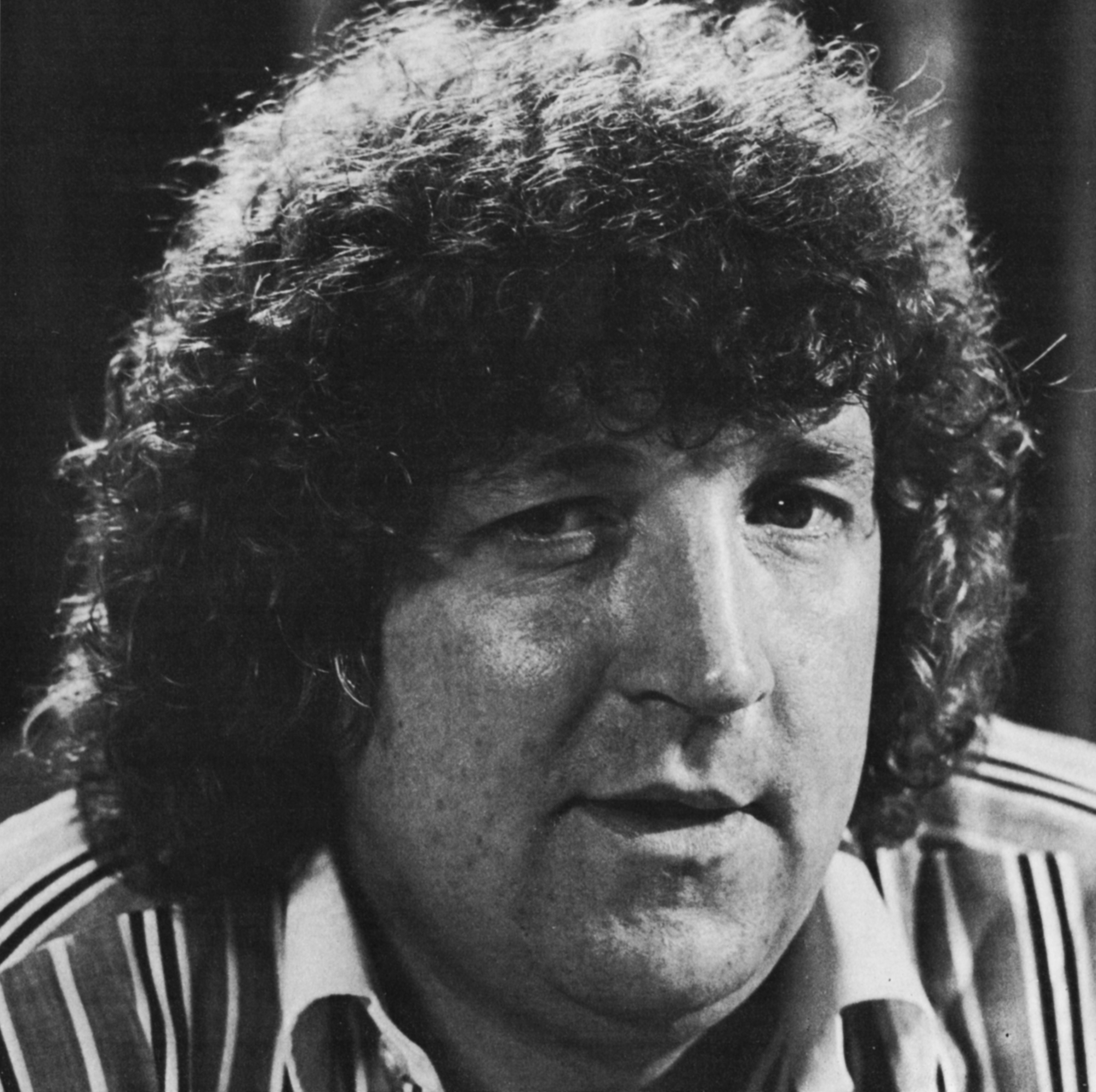
Sandy, a very special son

Sandy Richardson was fifteen years old when his mother opened up the family hotel as the Crossroads Motel. After his father’s death Sandy was determined to help Meg all he could, but his plan to sabotage the opposition by putting salt in the sugar bowls of the Fairlawns Hotel went sadly awry. He was accused of stealing a sum of money and it was only through Hugh Mortimer’s quick wits in discovering the real thief that Sandy did not find himself on a criminal charge.
After this Sandy left the running of the motel to Meg while he concentrated on carving himself out a career as a cub reporter on the local paper. He gained the respect of Cyril, his editor, when he managed to cope with the day-to-day running of the newspaper during Cryil’s illness, and he began to cover important events in King’s Oak, such as the memorable court case involving the old Coach House.
He found excitement on his own doorstep when he and Meg were threatened in one of the motel’s chalets by a man with a gun, but Sandy kept a cool head and all was well.
Sandy seemed all set for a happy future. His boyish charm won him many friends and he had a special place in his mother’s heart . . . but then tragedy struck.
On his way back from a wedding in 1972, Sandy was a passenger in David Hunter’s Uncle Timothy’s car. The car crashed, killing the drunken woman driver, and as a result Sandy now spends his life in a wheelchair.
The accident caused an incurable spinal injury and Sandy had to learn to live his life as a paraplegic. His mother and Jill and all his friends were worried about how he would cope with this, but Sandy has shown great courage in coming to terms with his disability, after the first shock, and he still retains his impish sense of humour and the charm which has won him so many friends.
Today he shows how he can still help in the efficient running of the motel, even from a wheelchair, and Meg is confident that the managerial side of the motel can benefit from Sandy’s skill and knowledge. Crossroads is a very special motel, and there will always be a place there for Sandy, a very special son and a very special person to all Crossroads fans.




